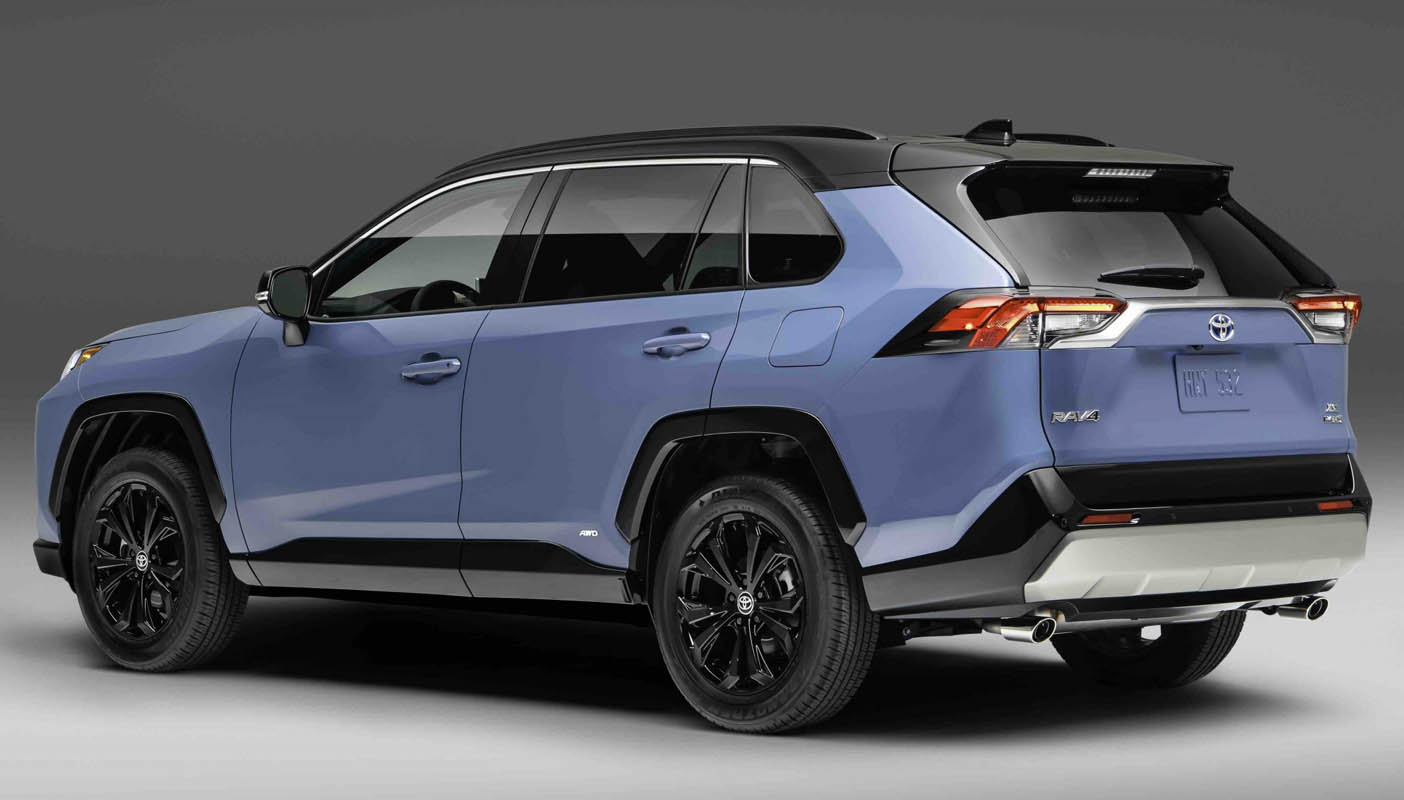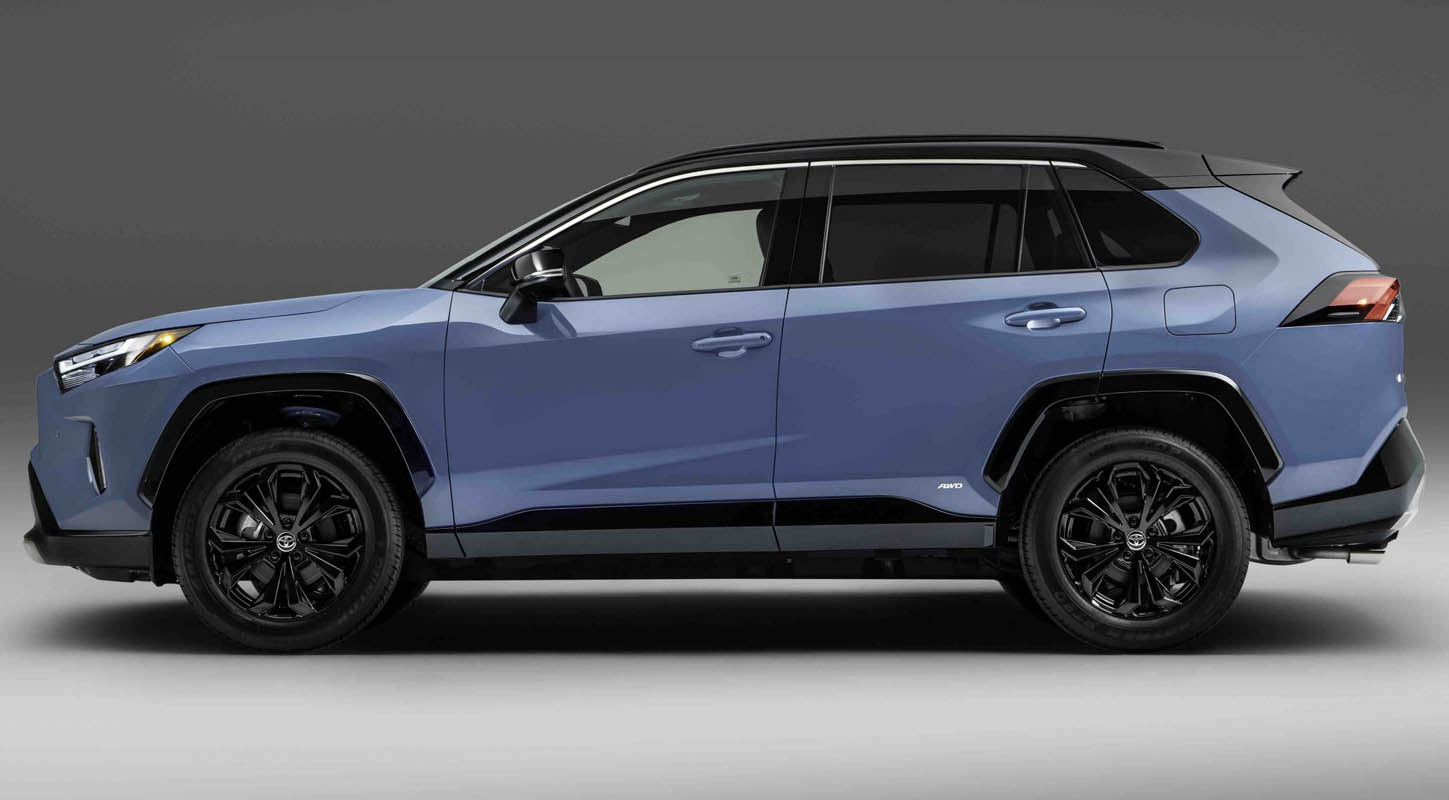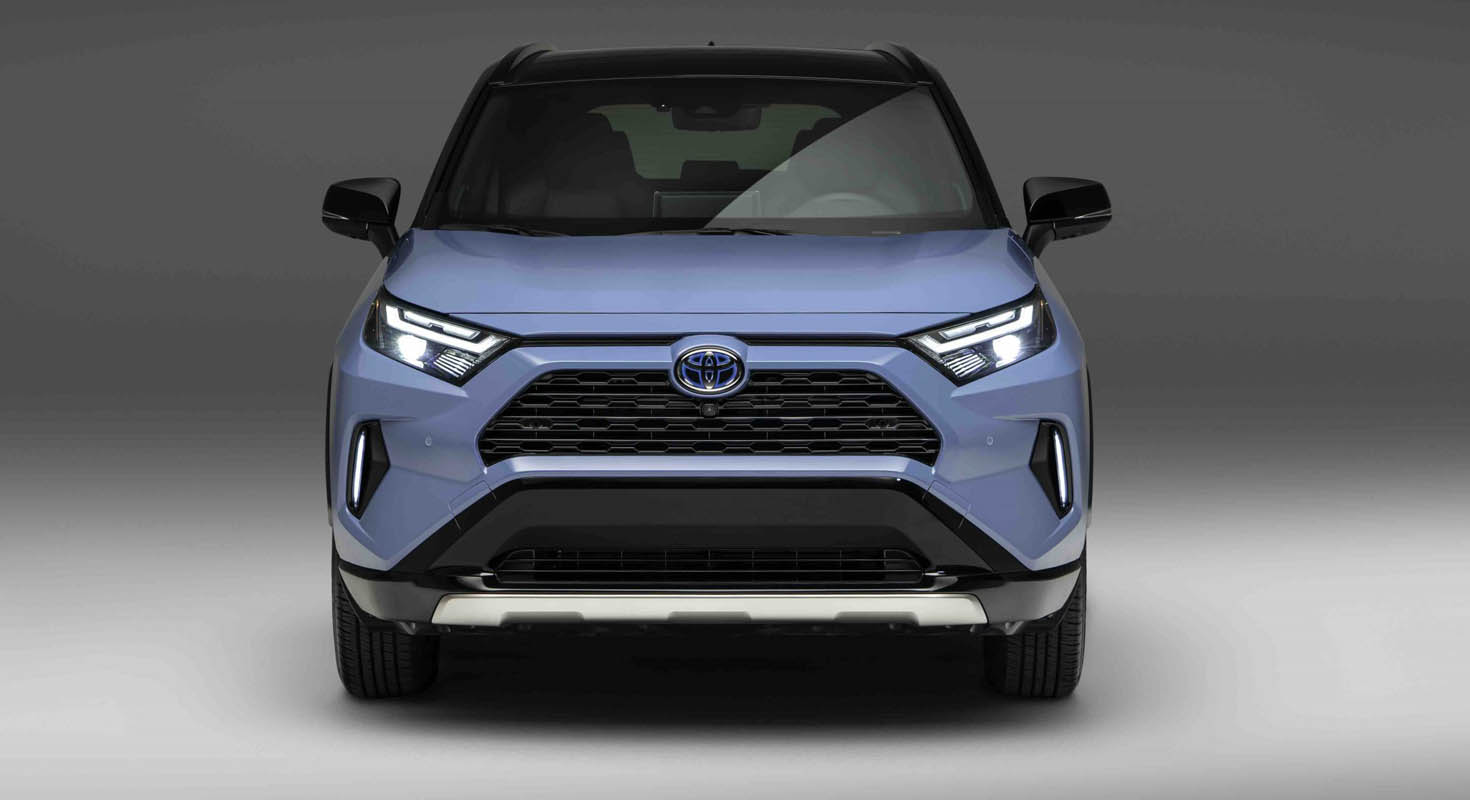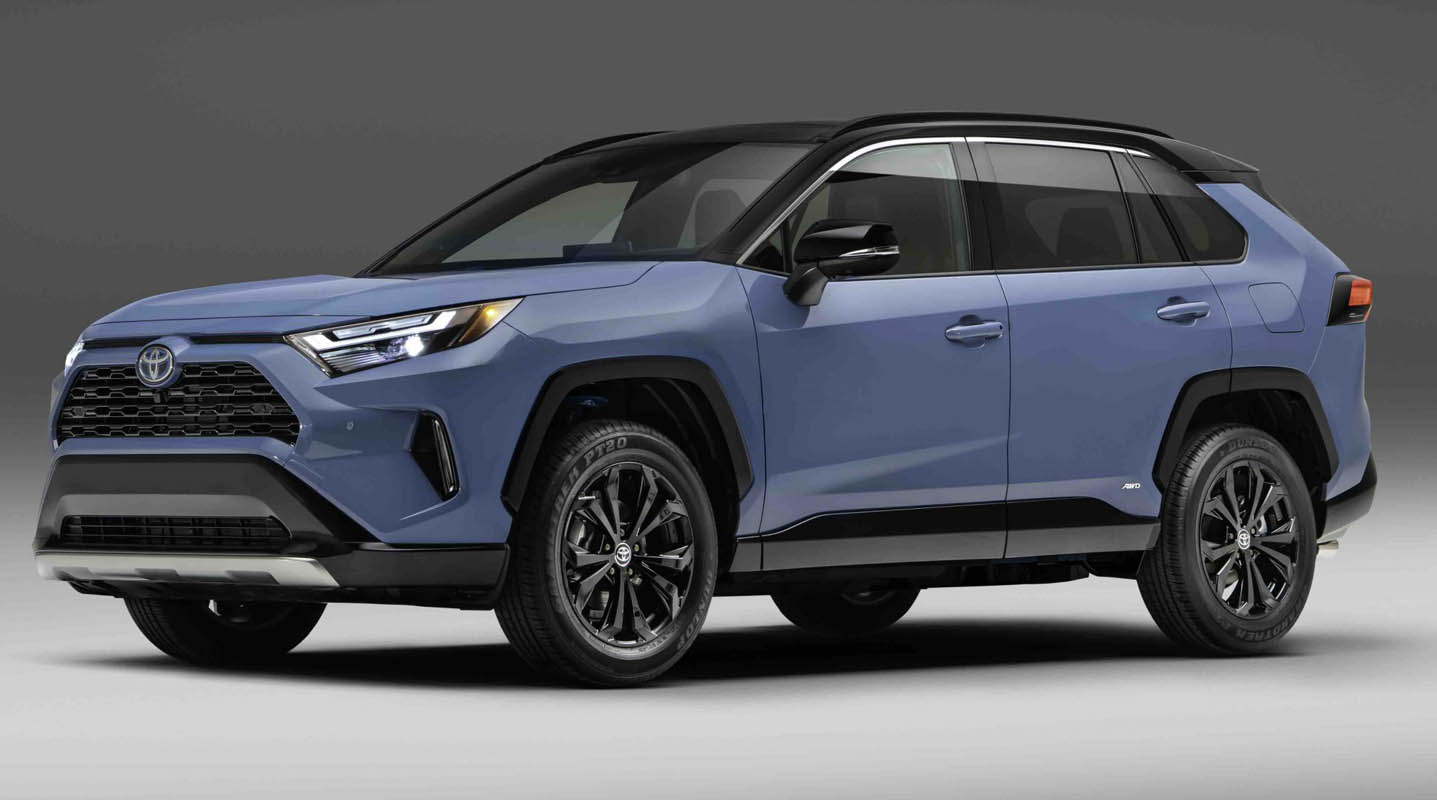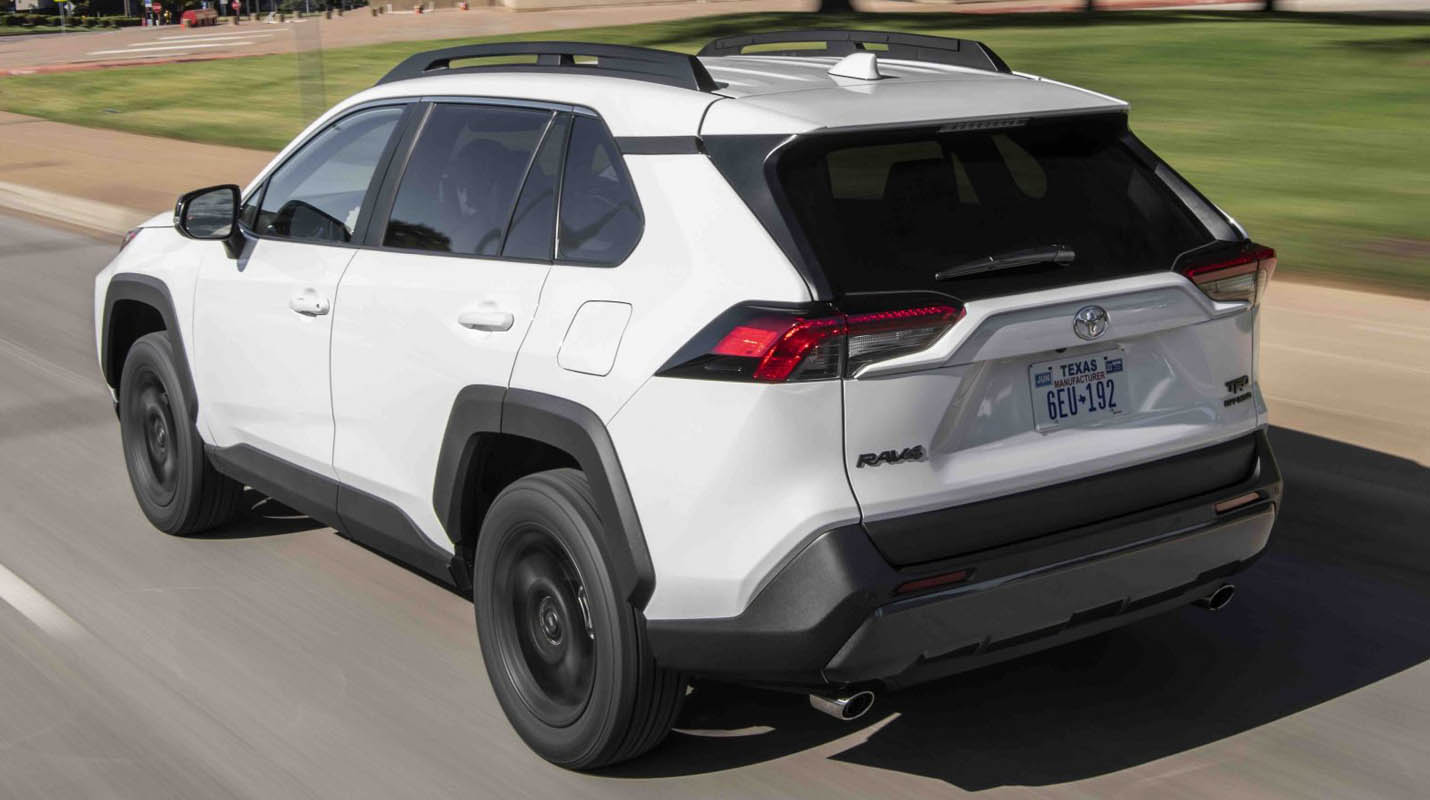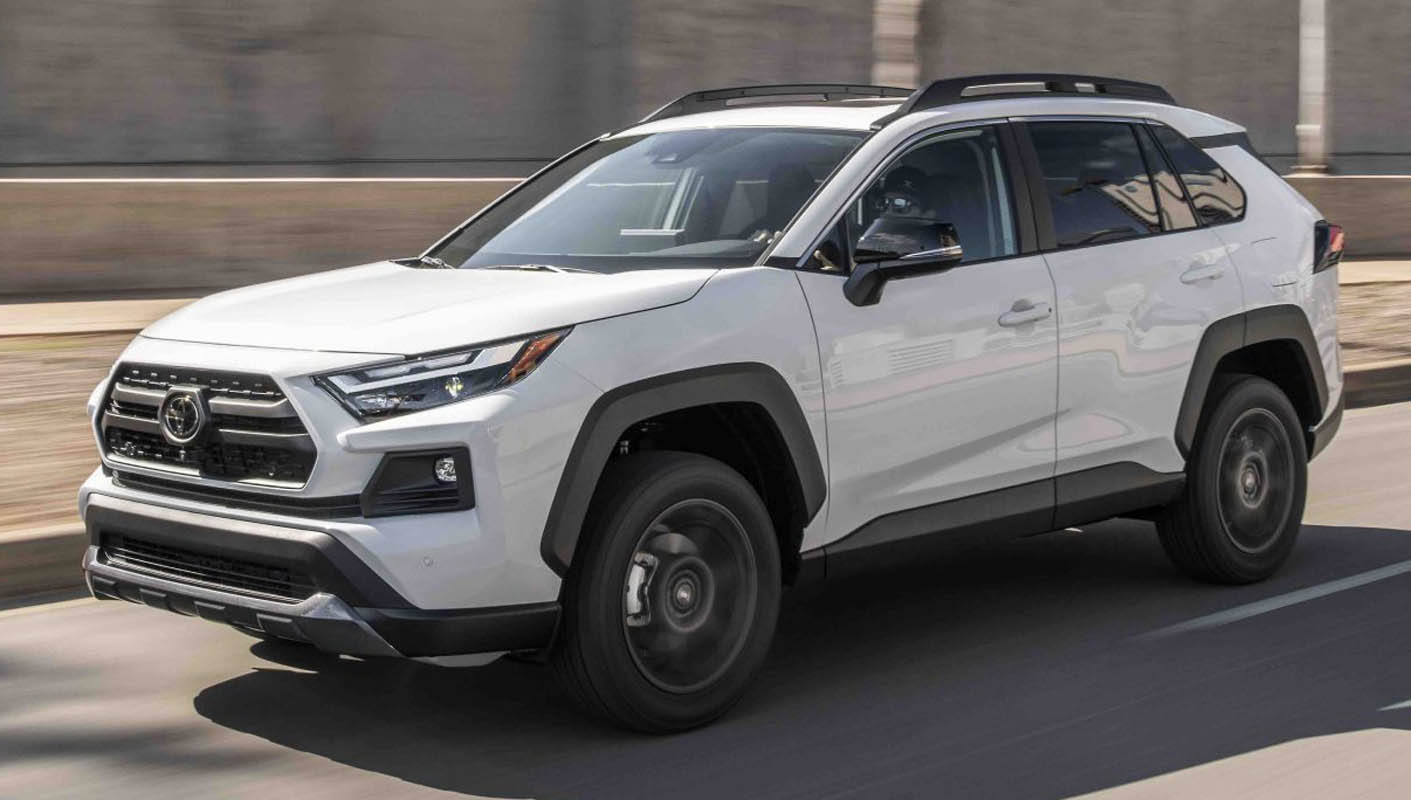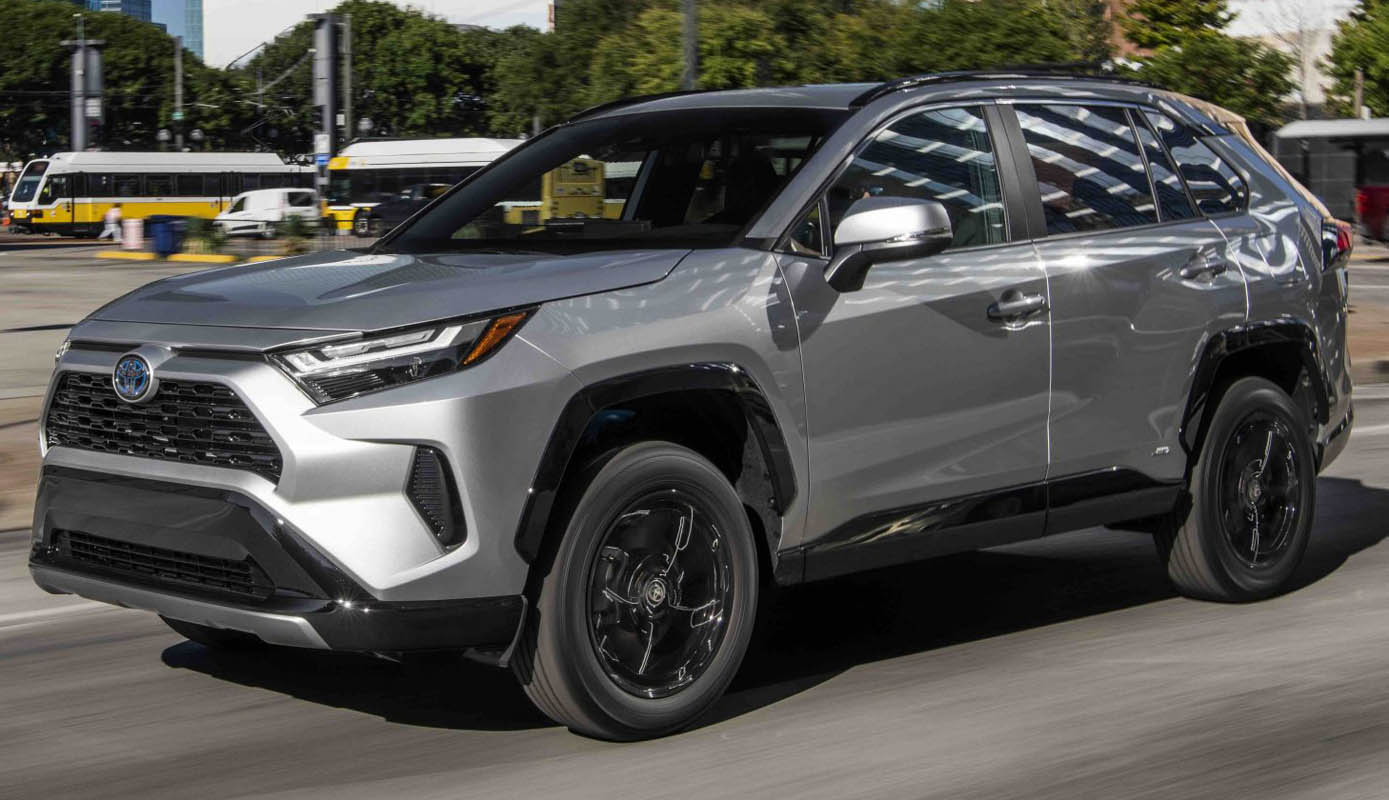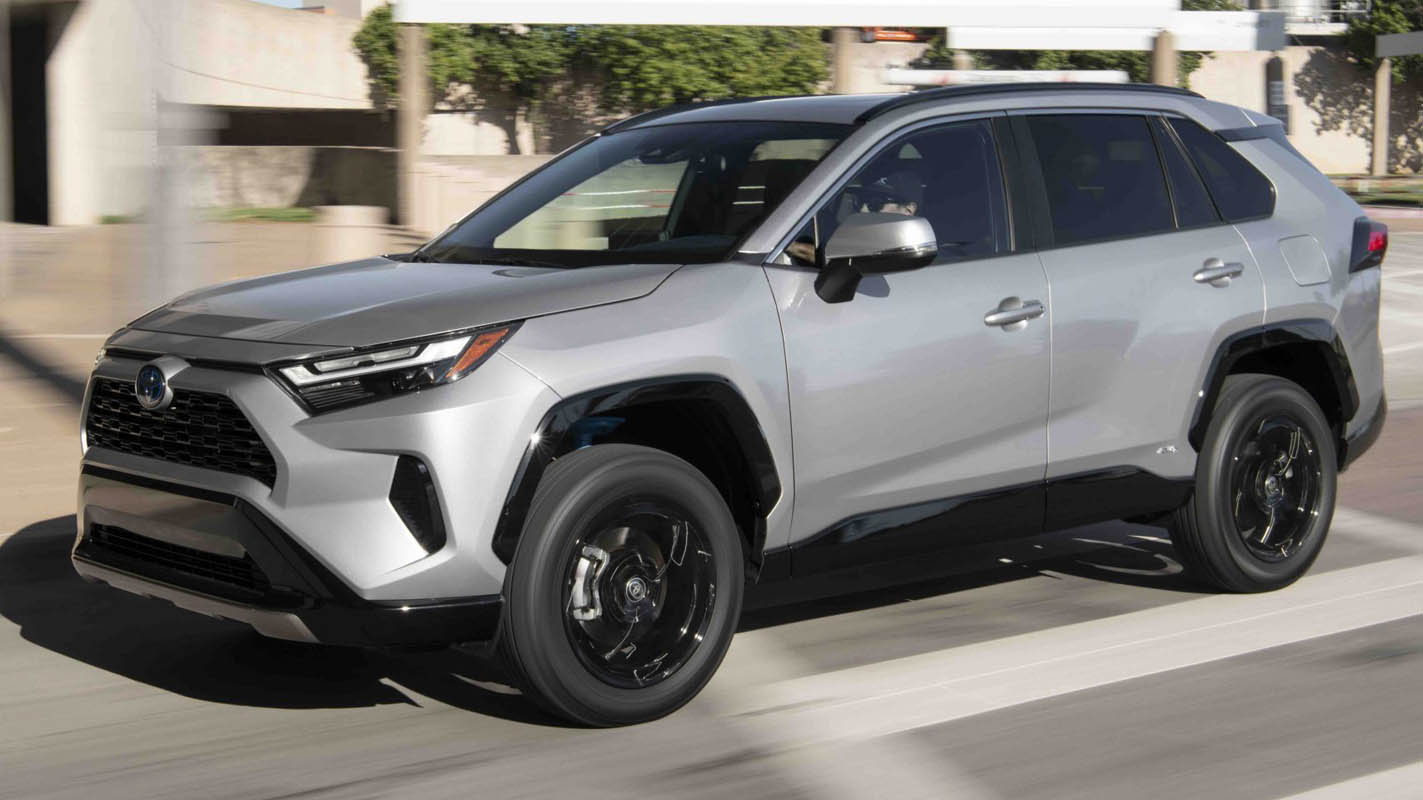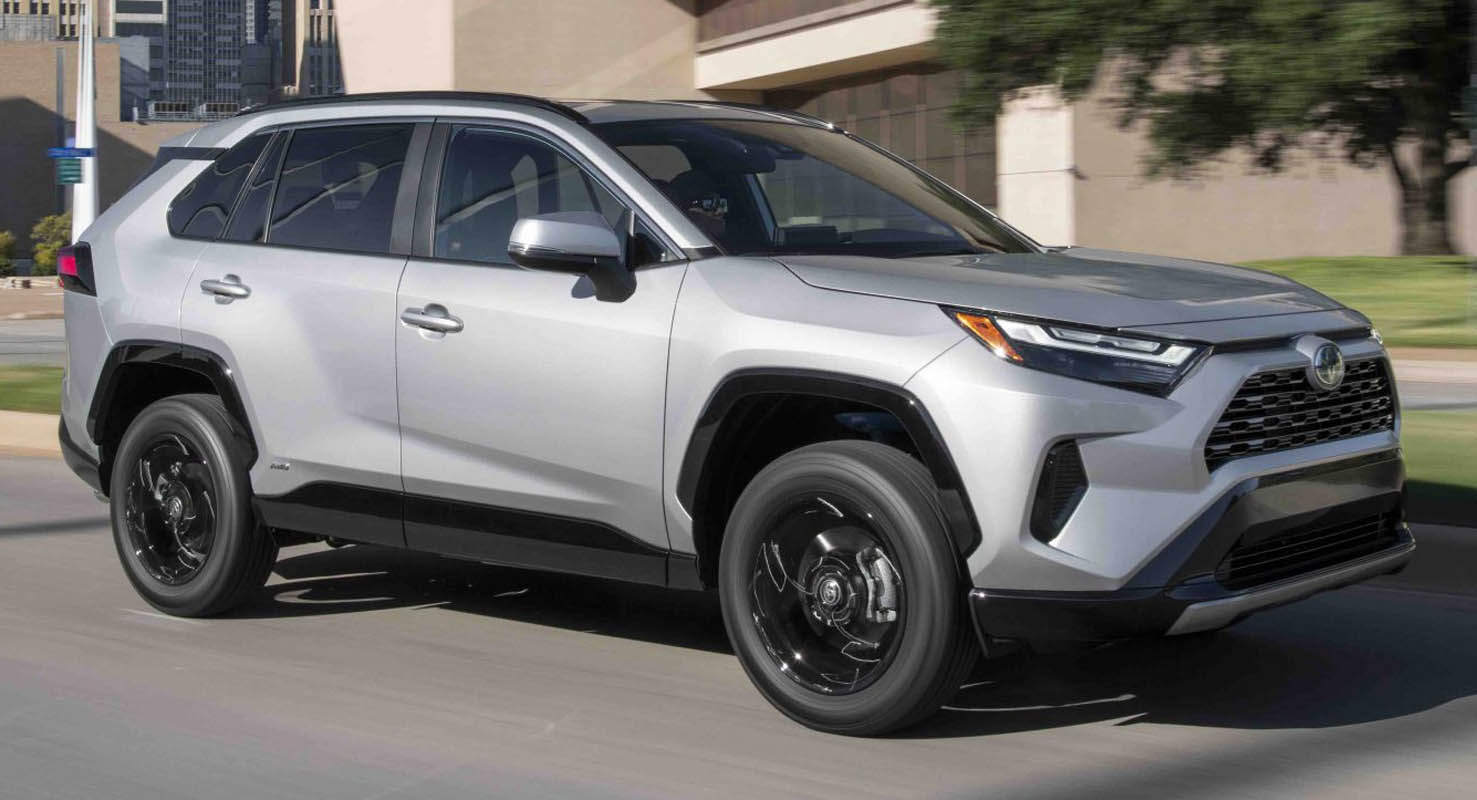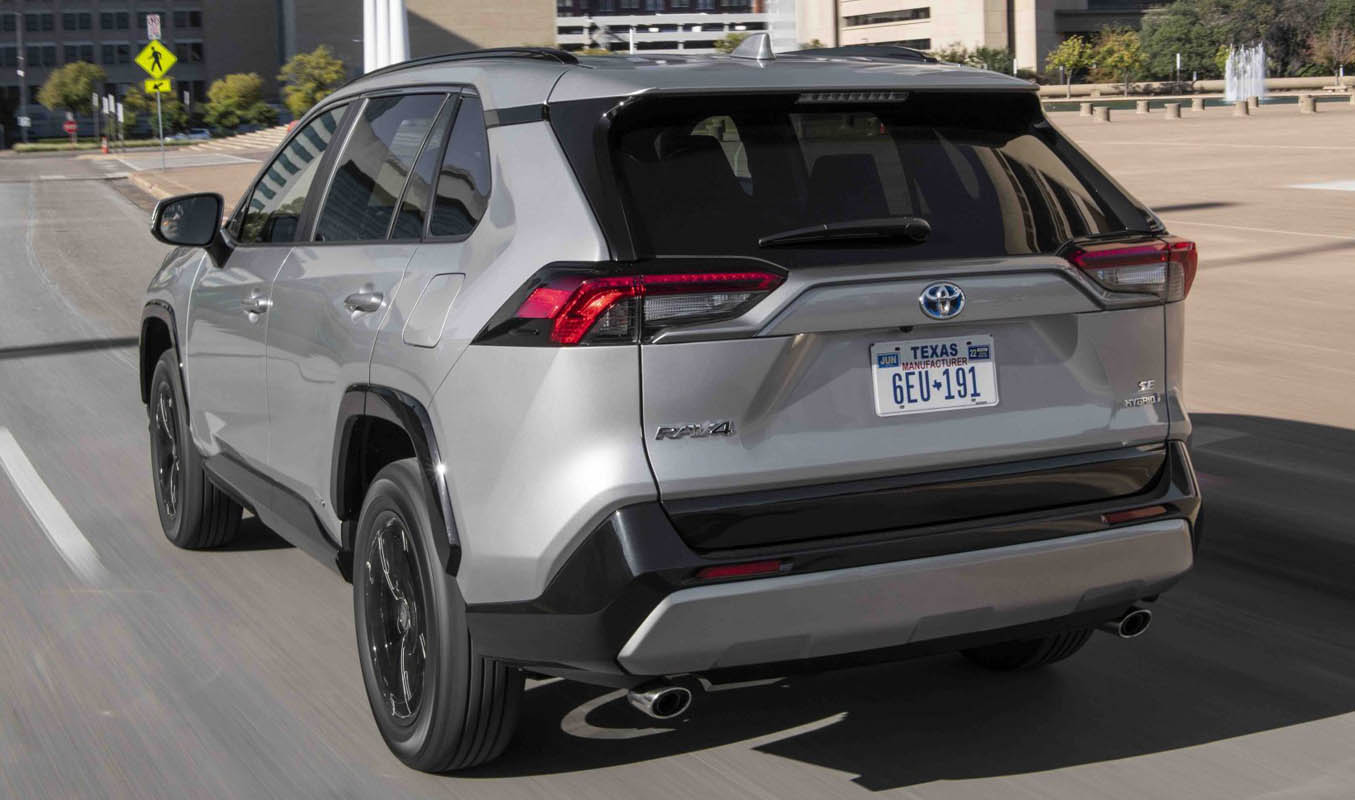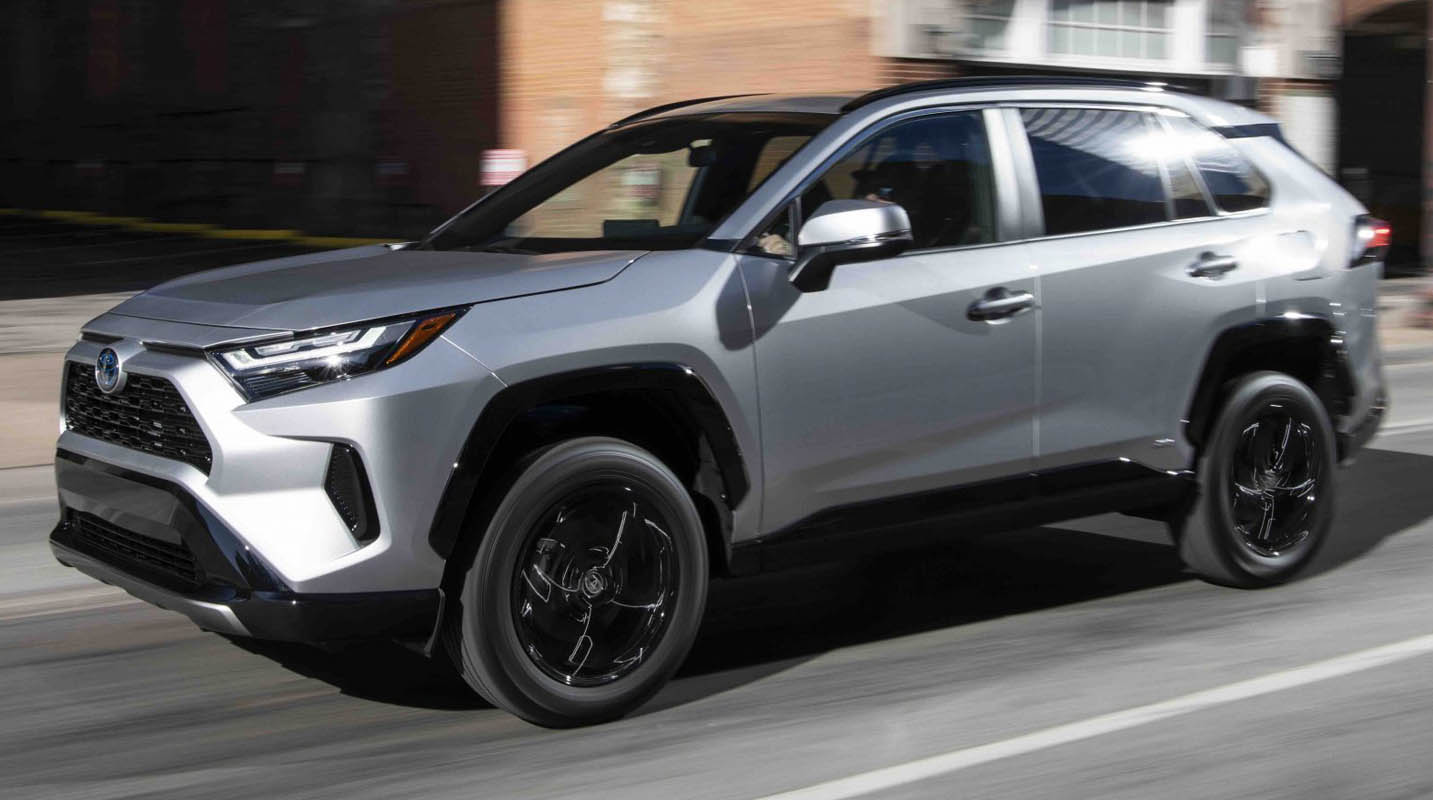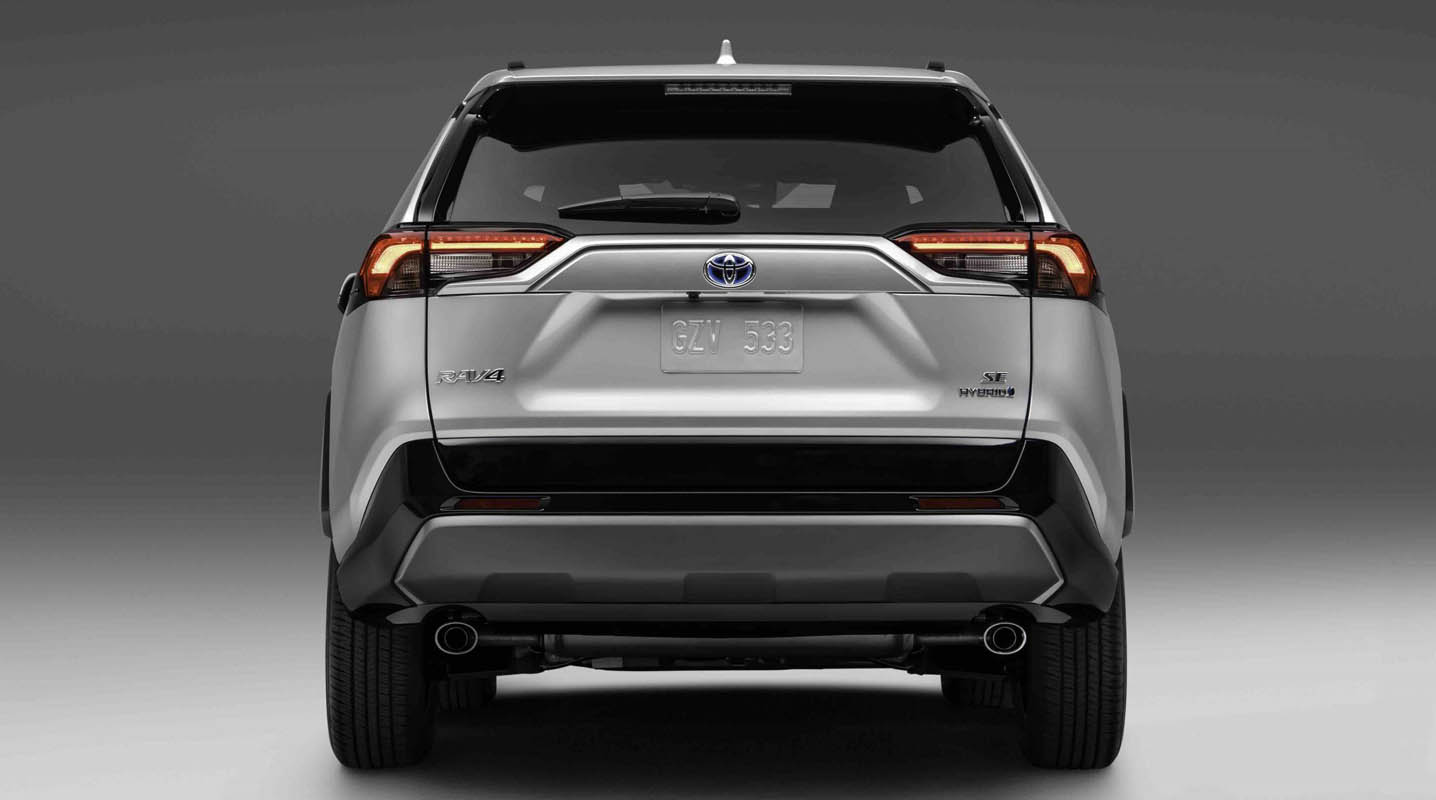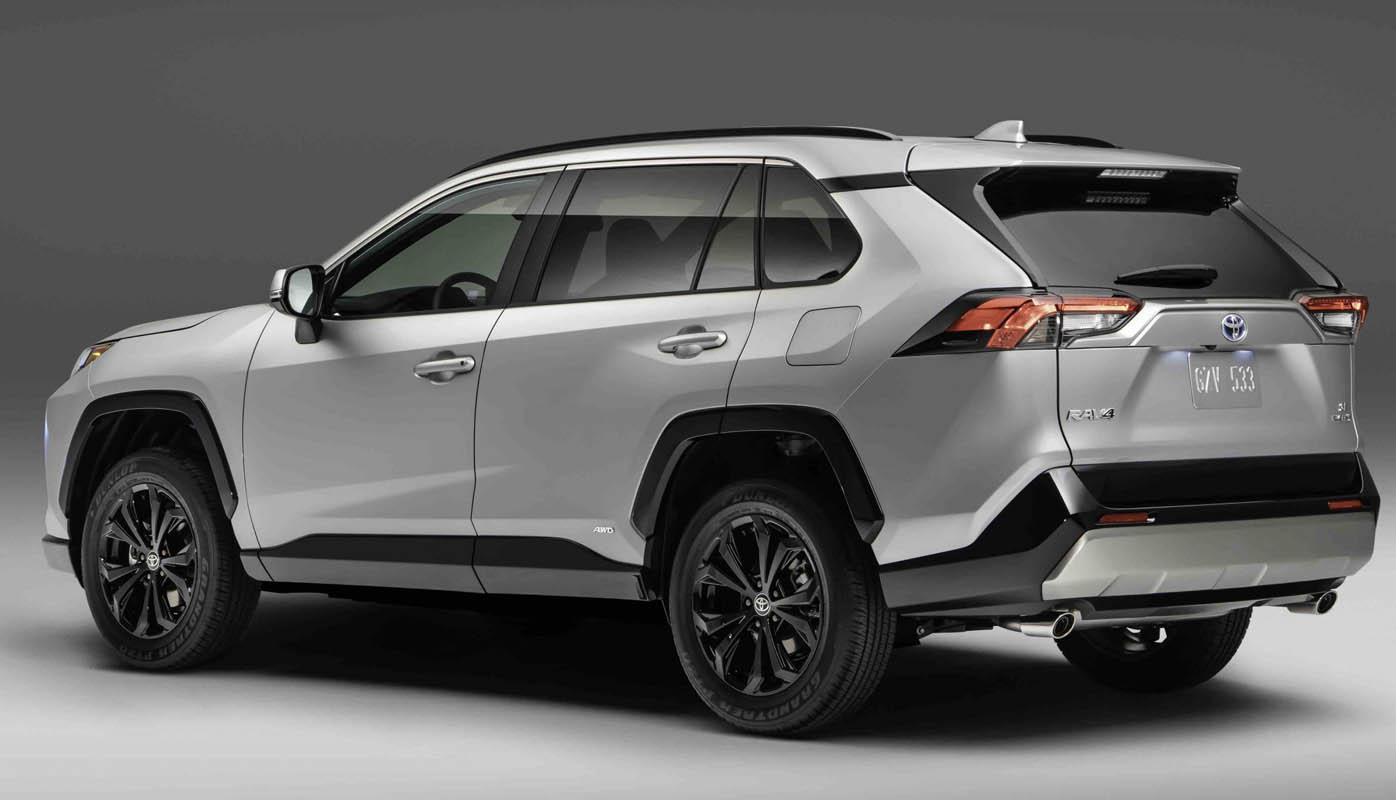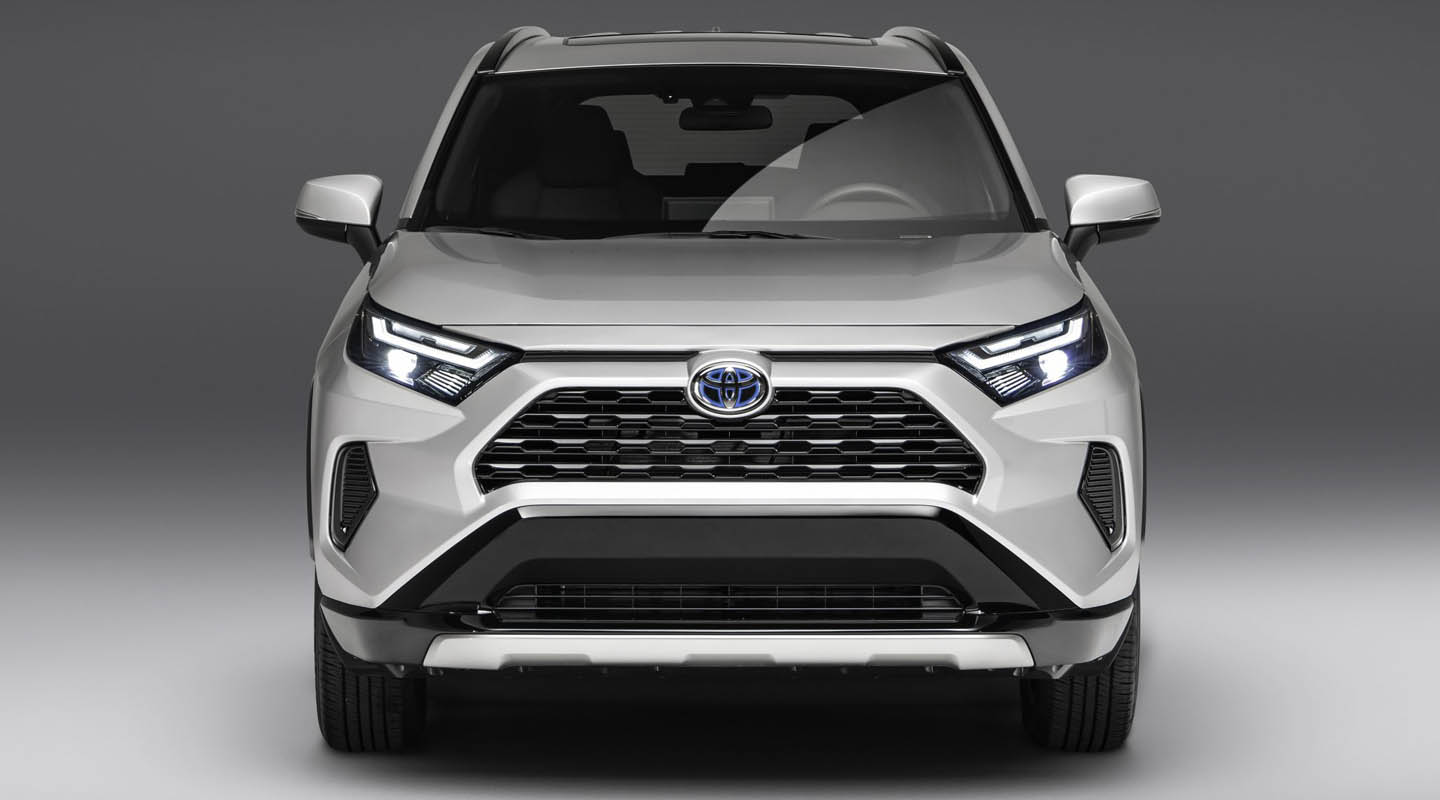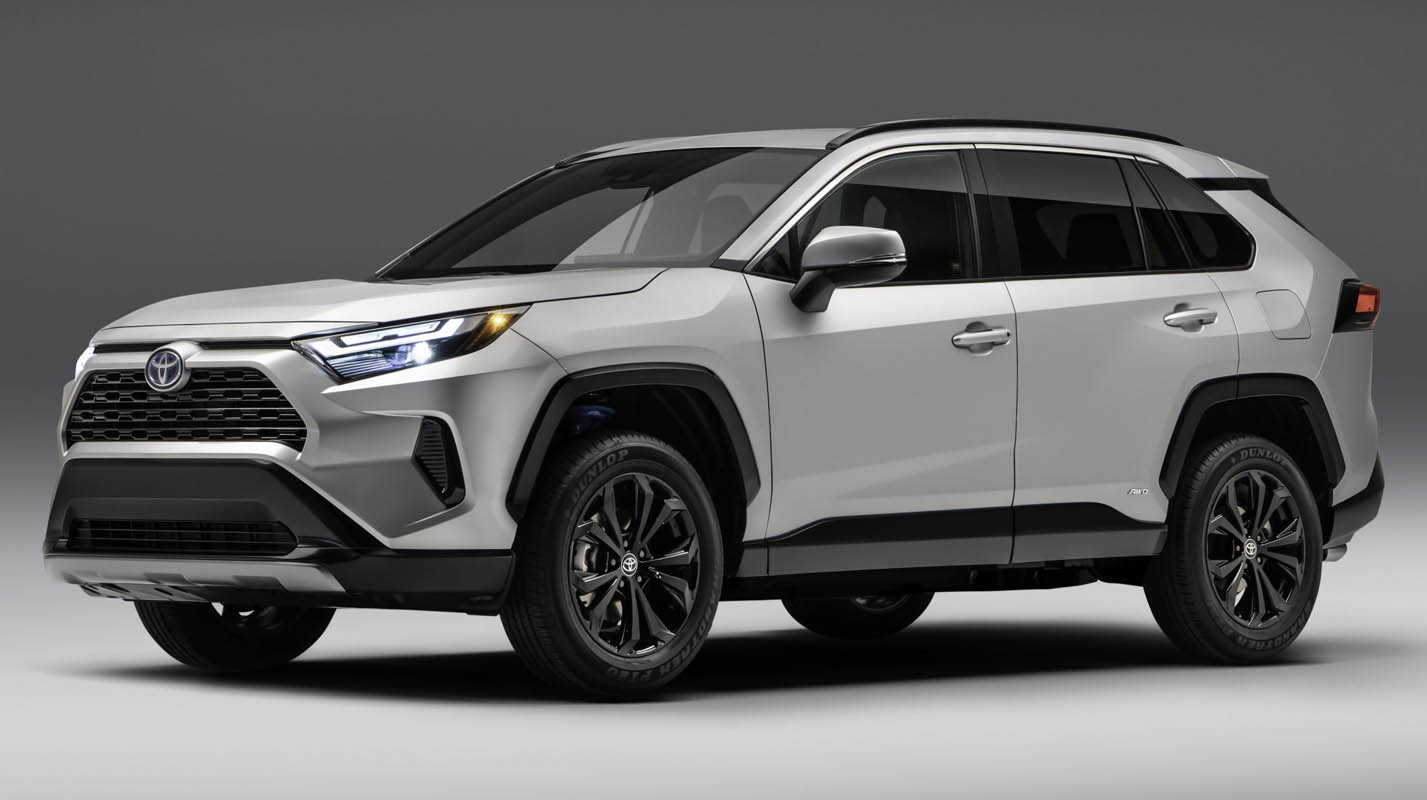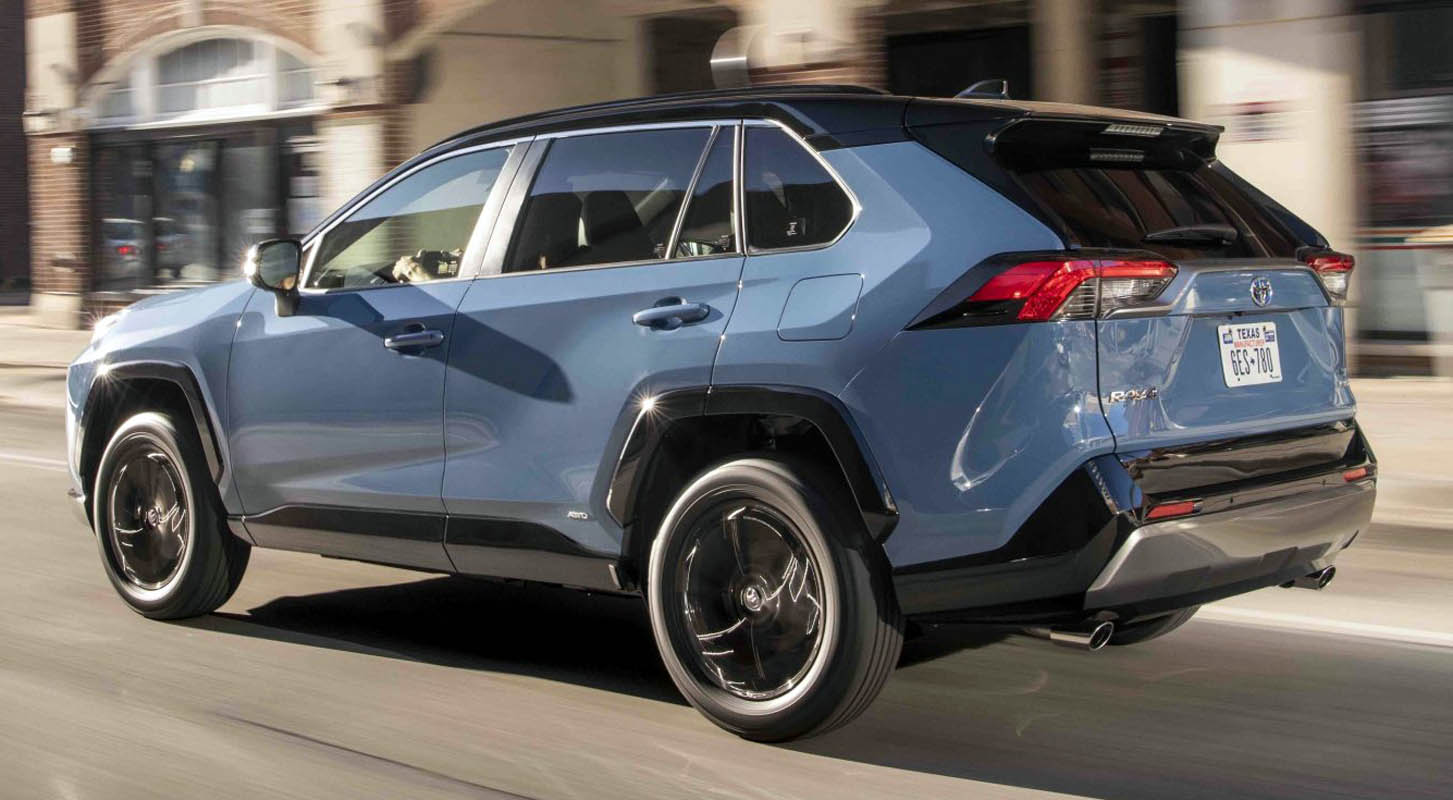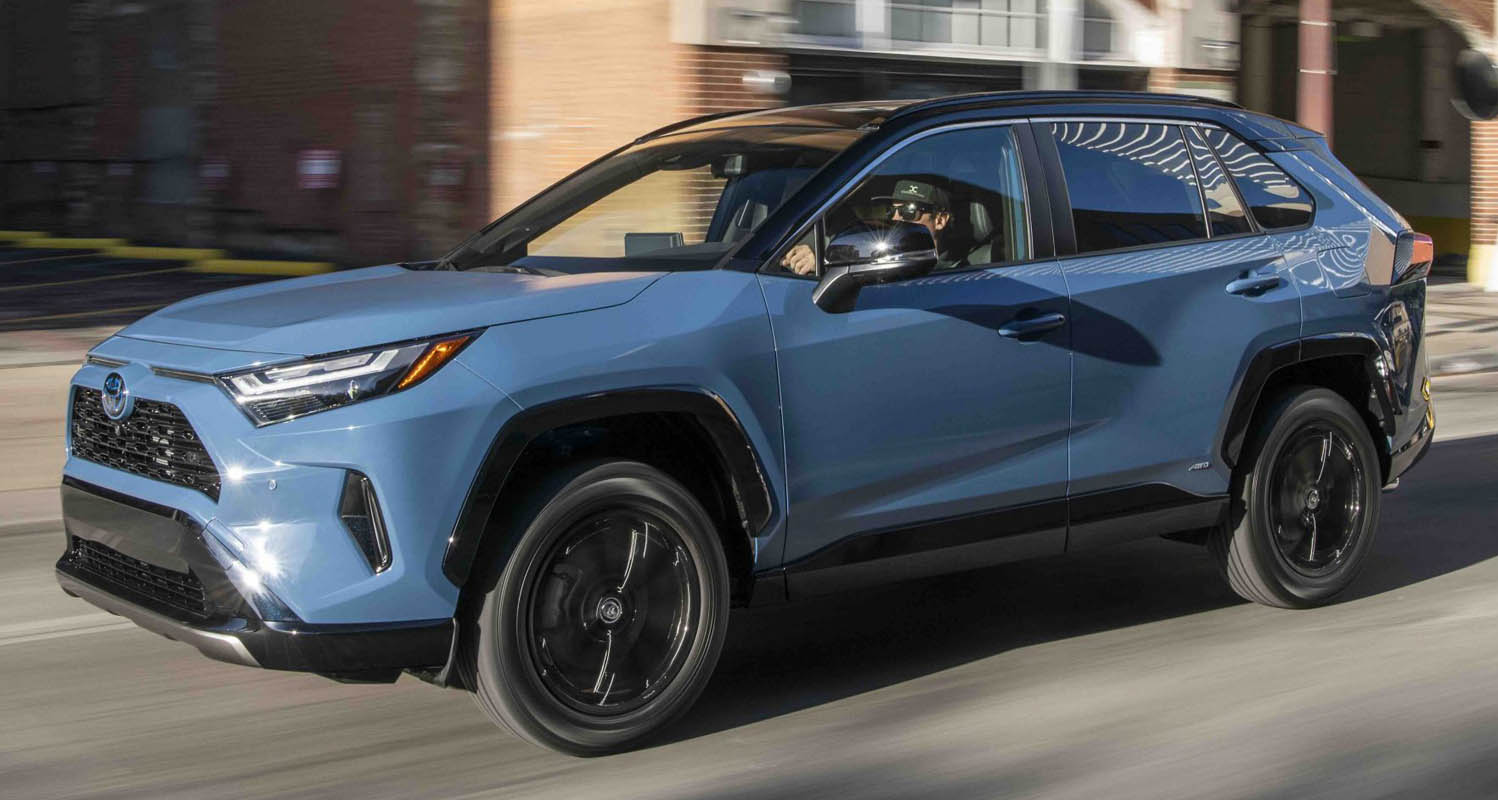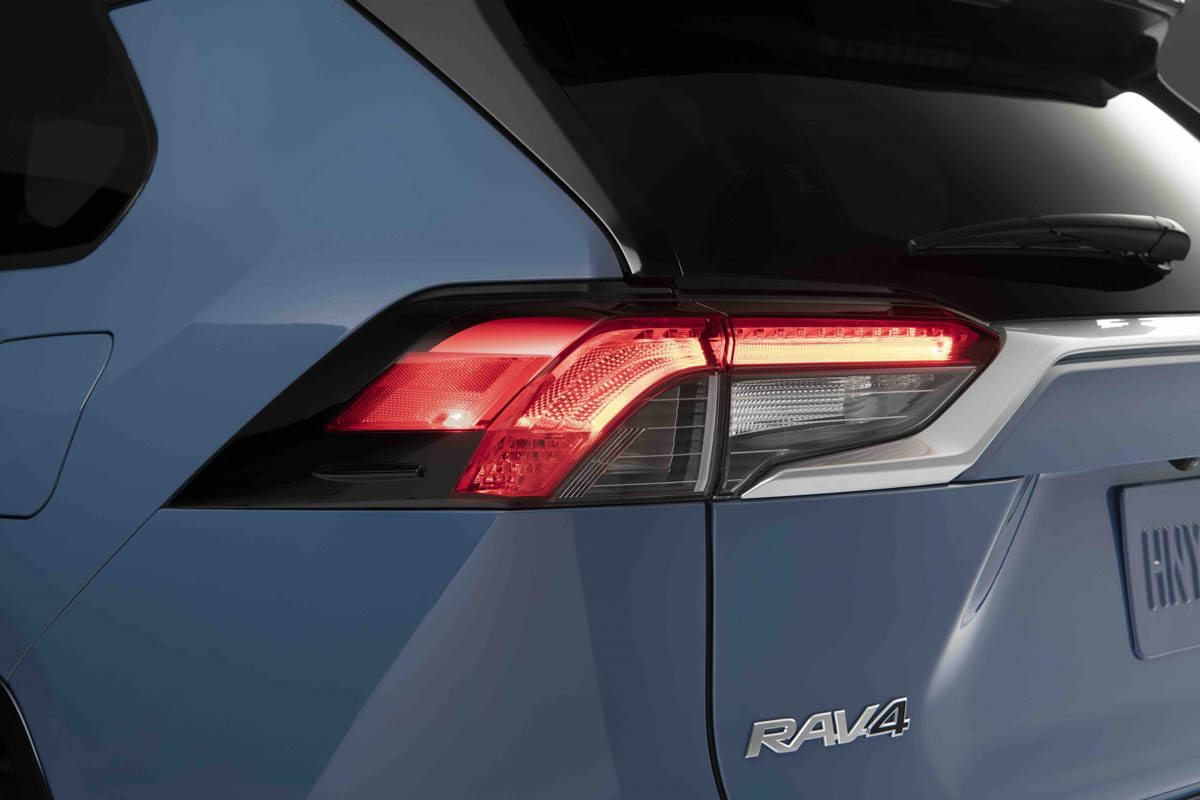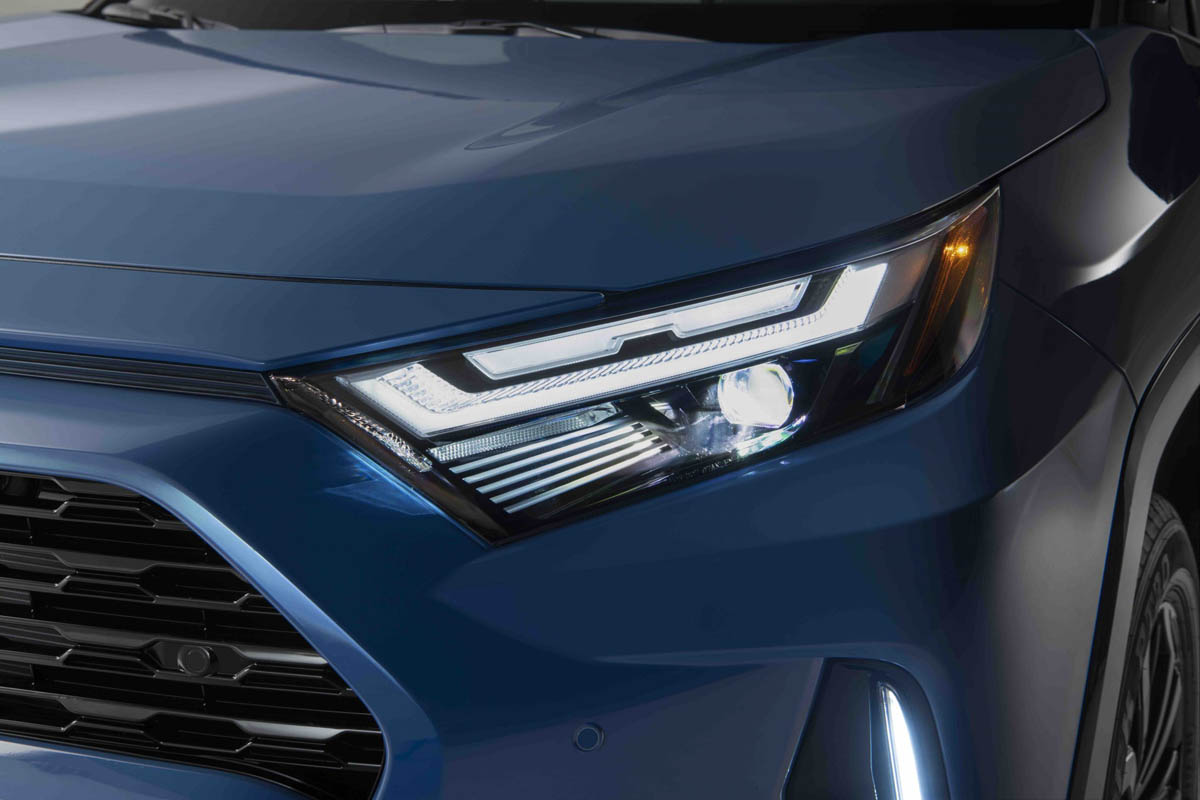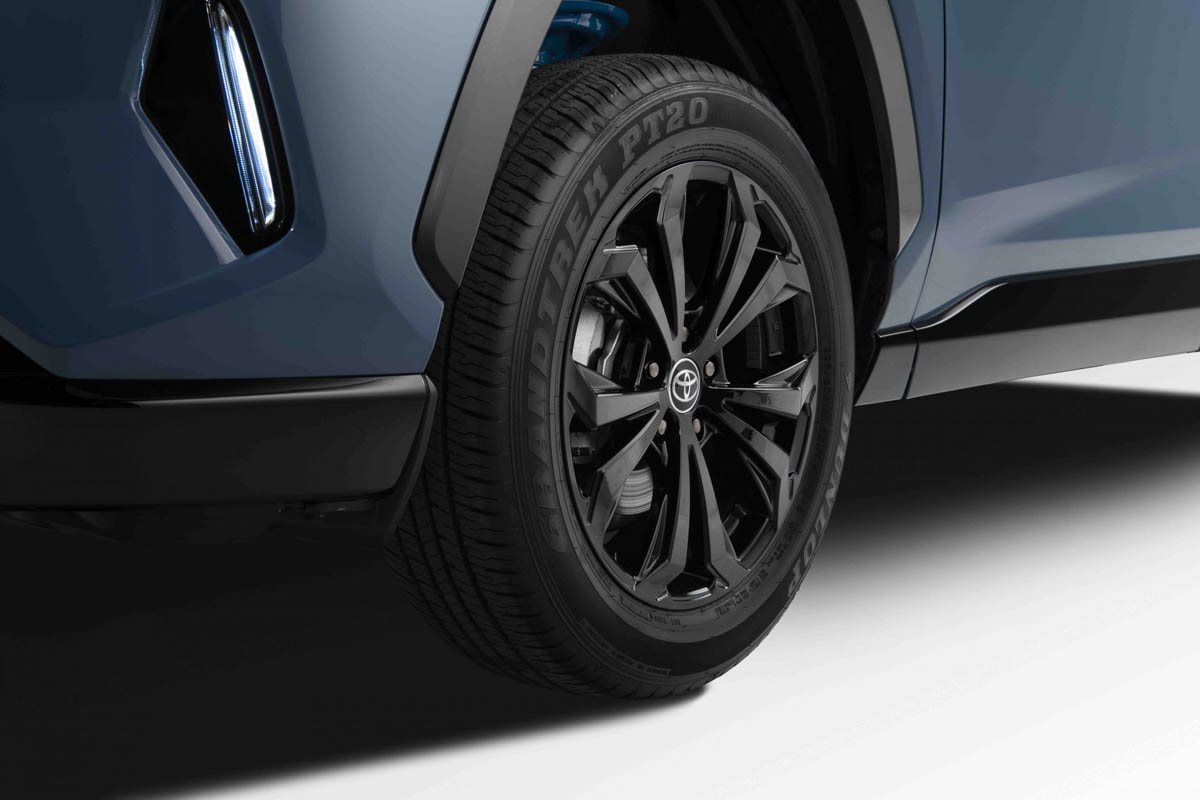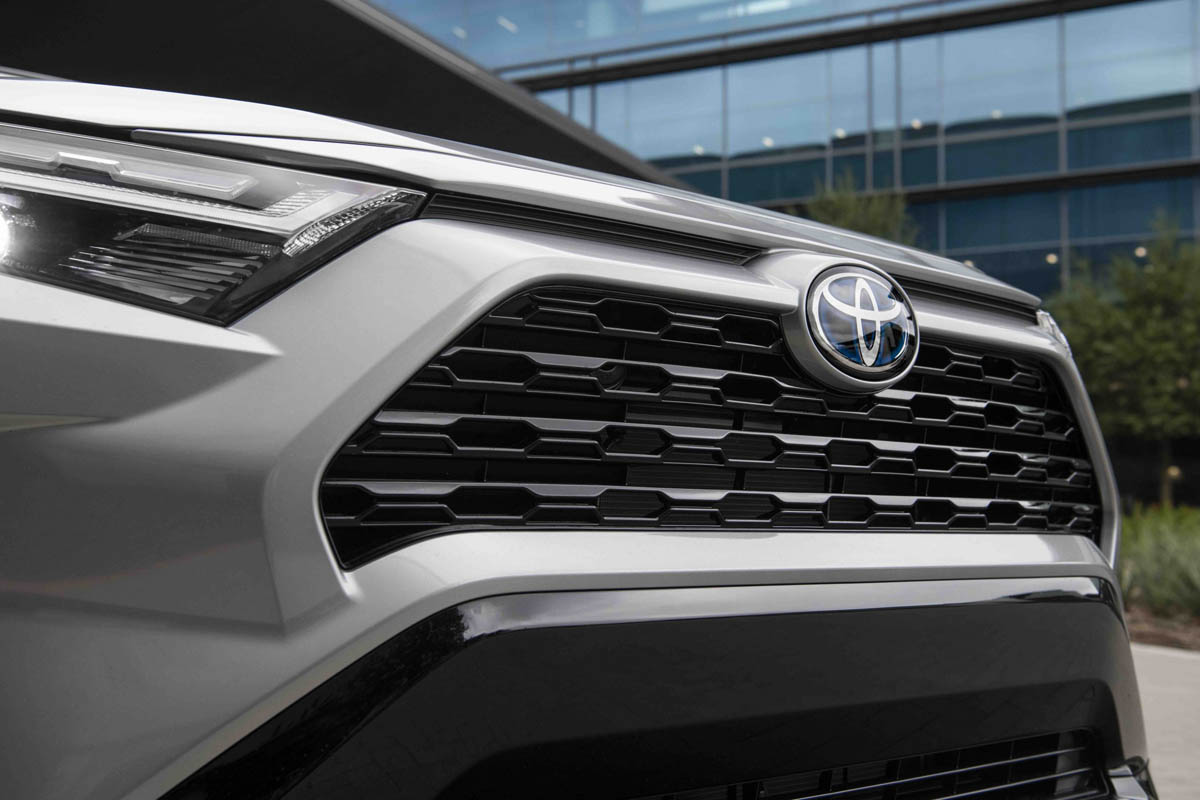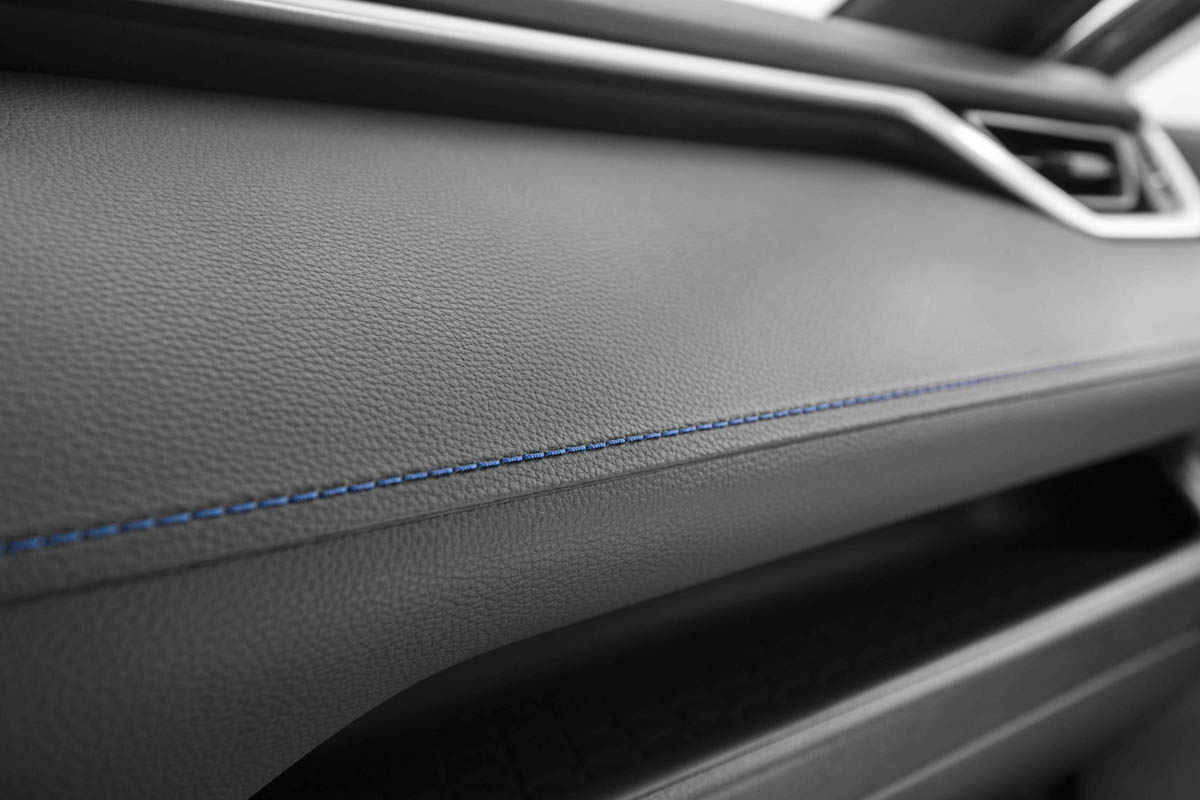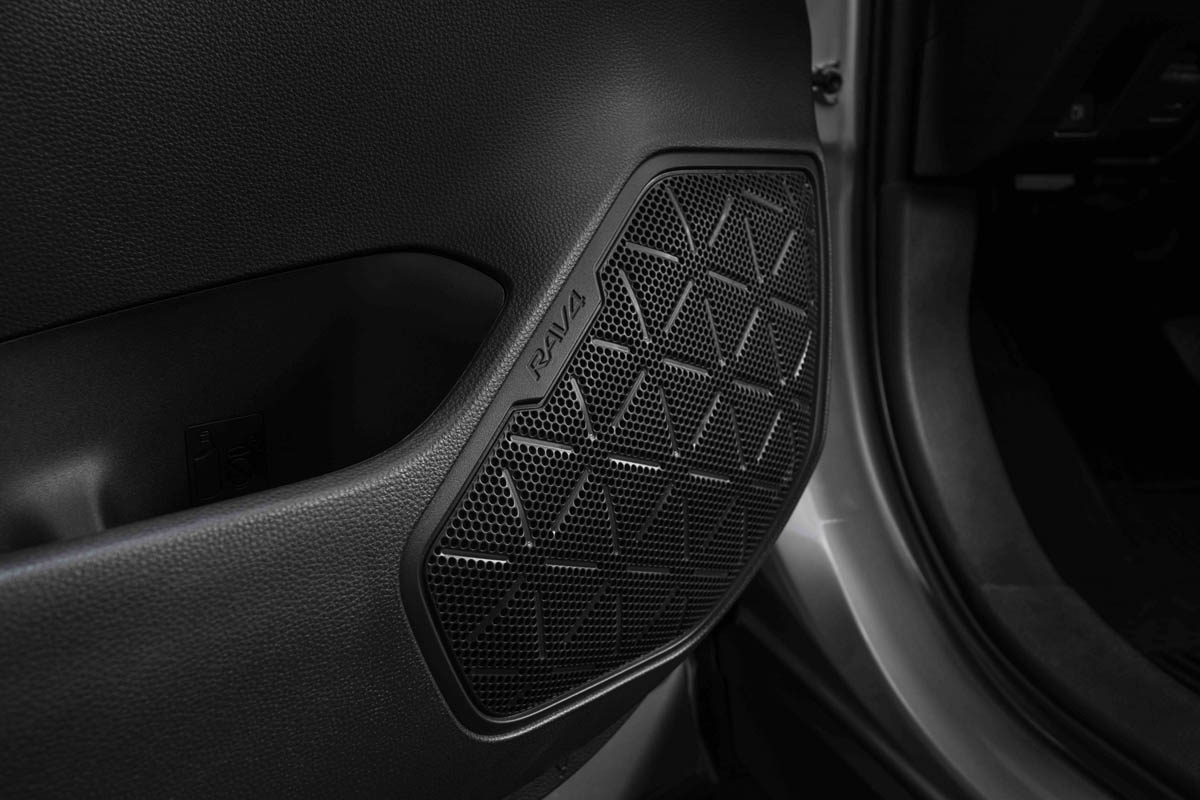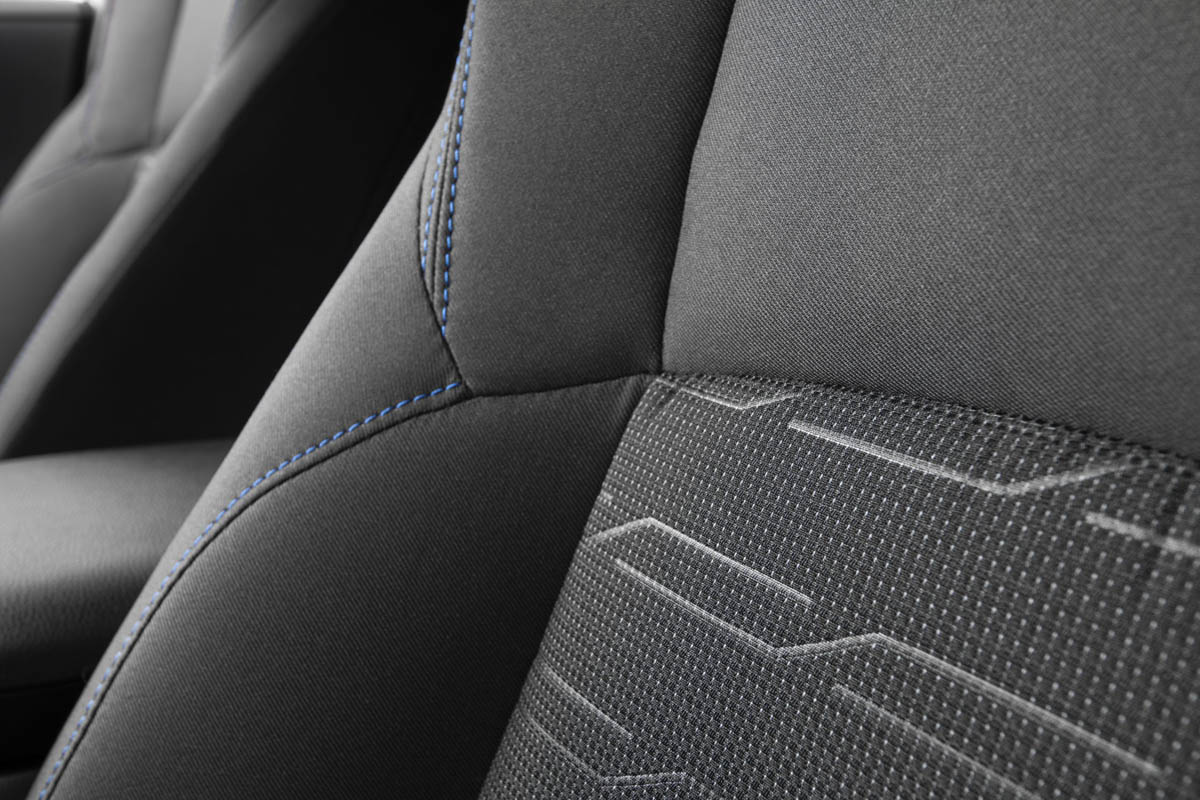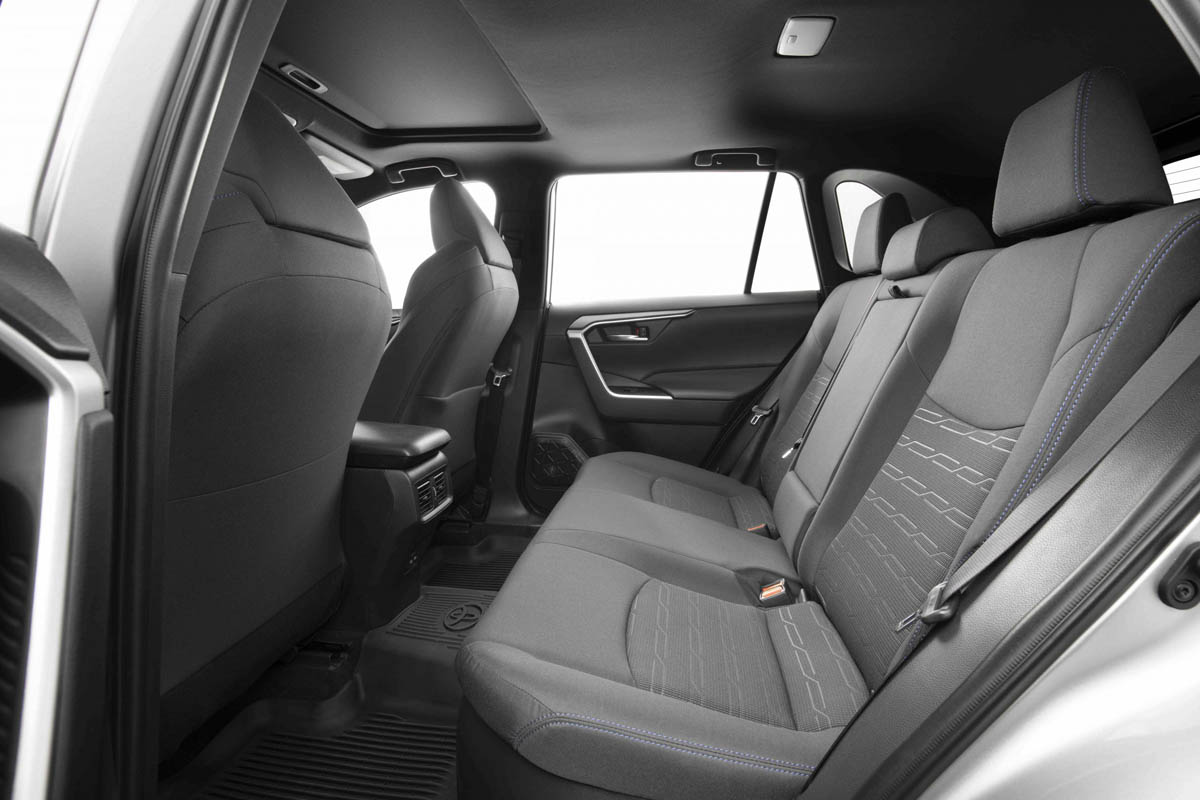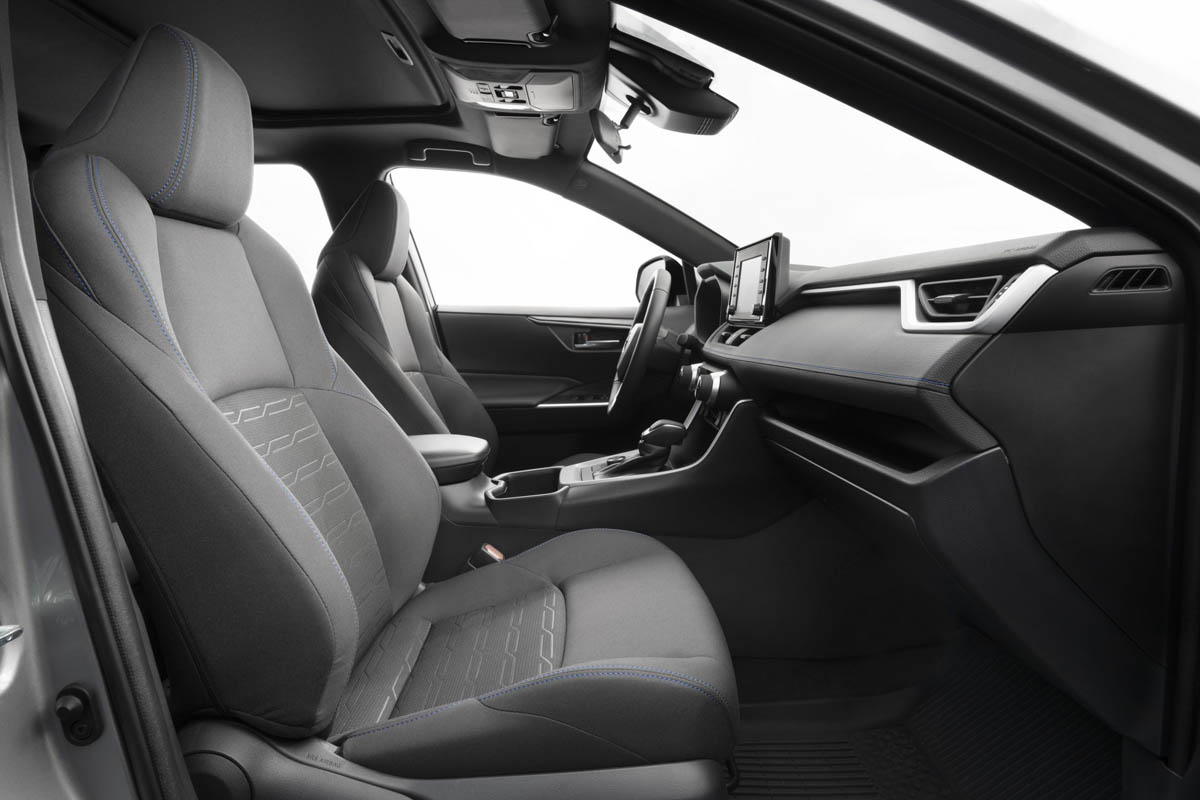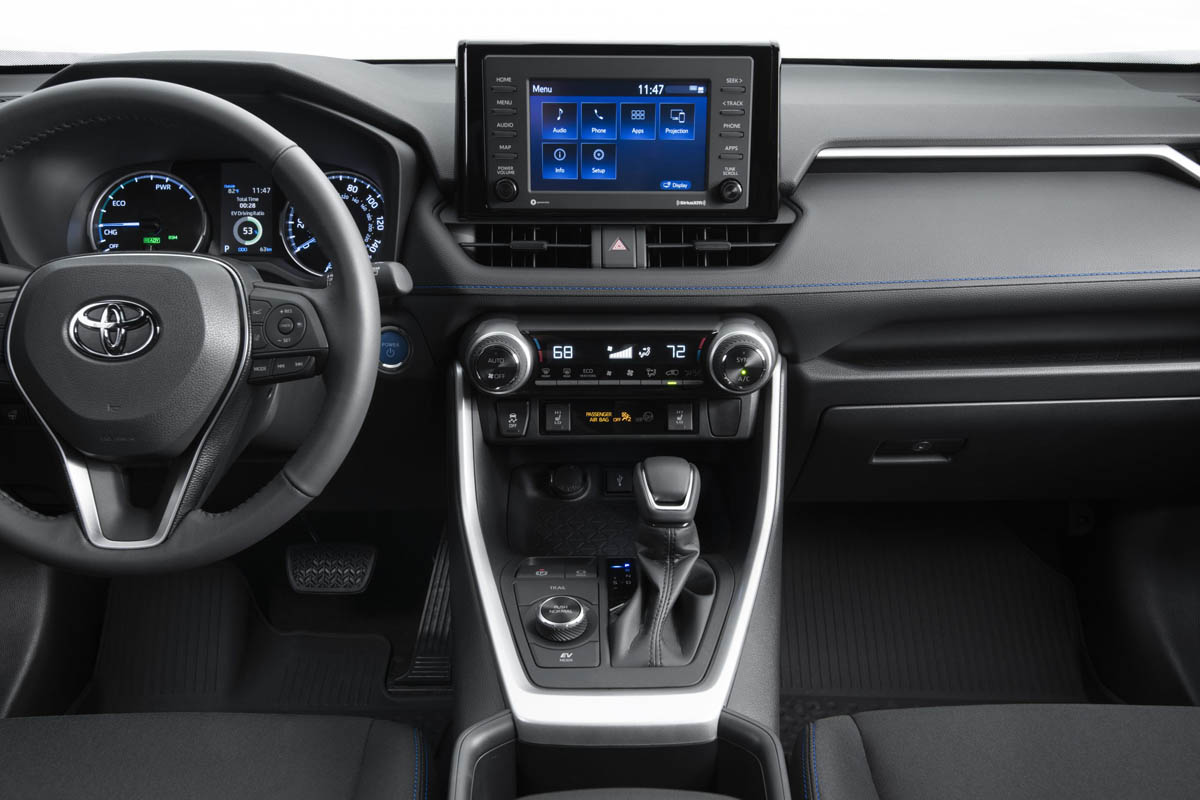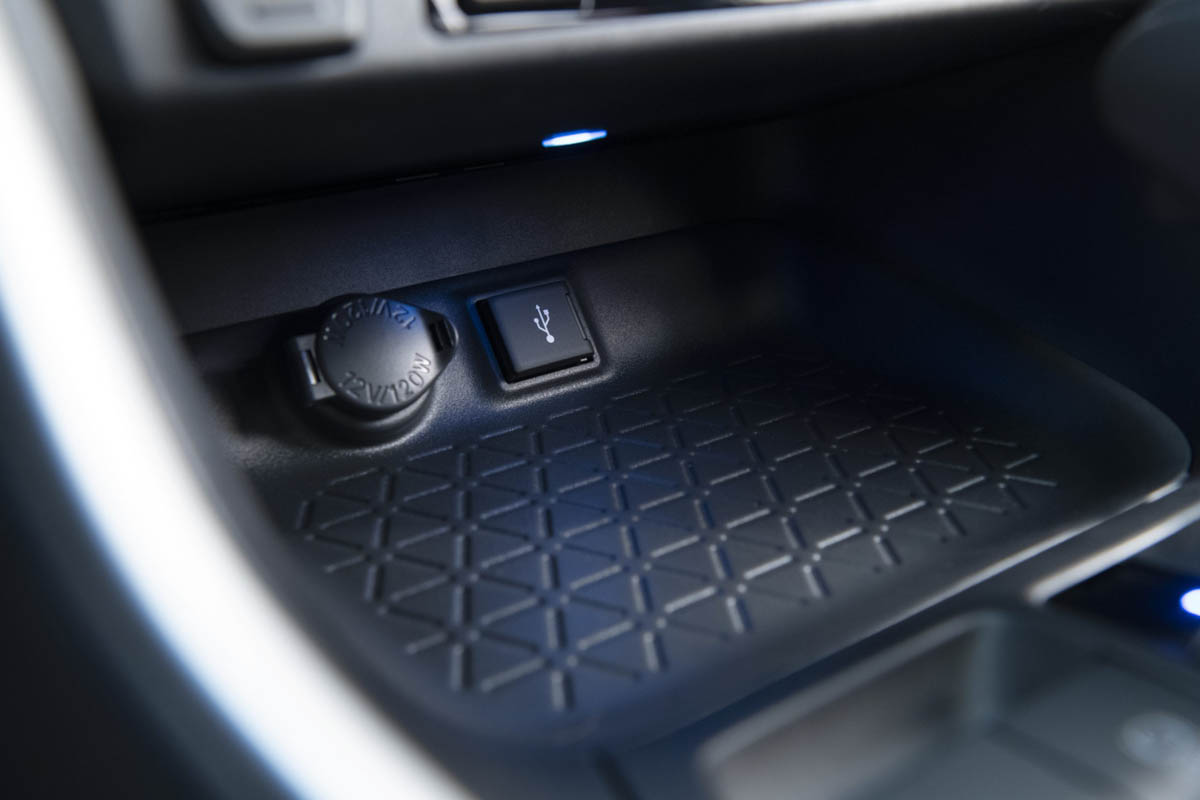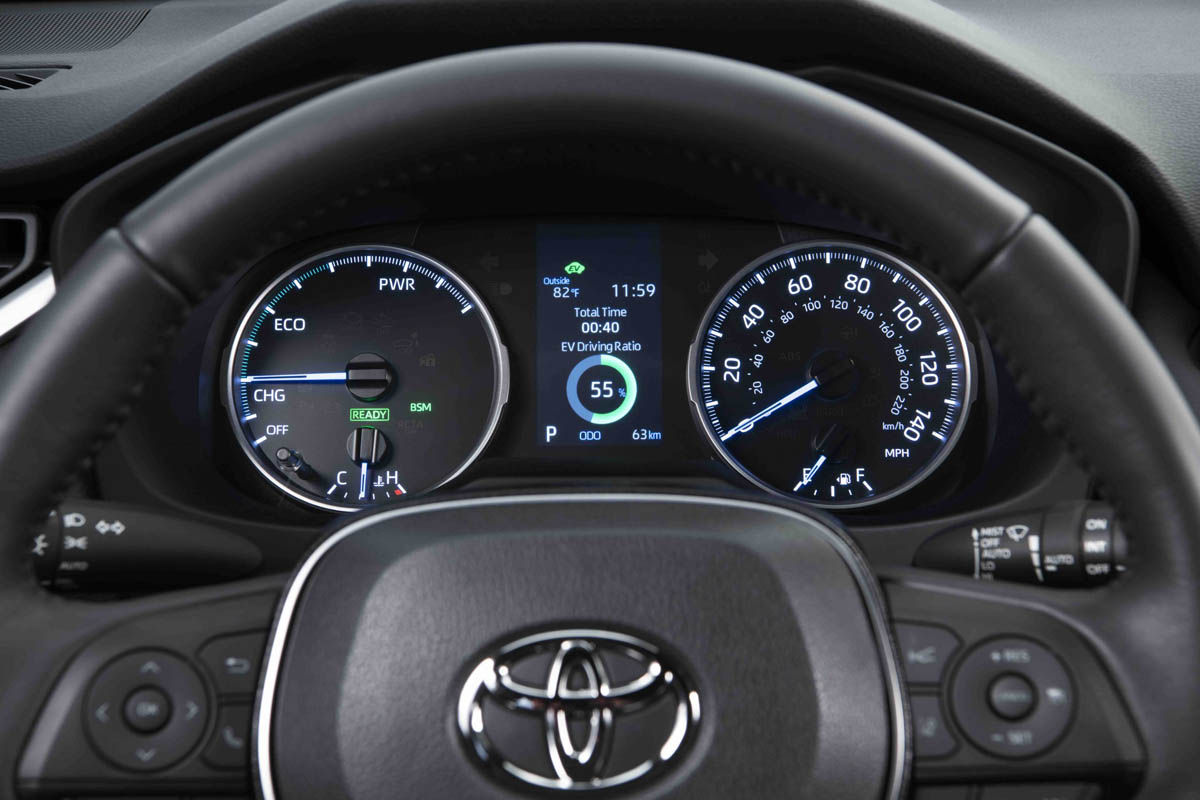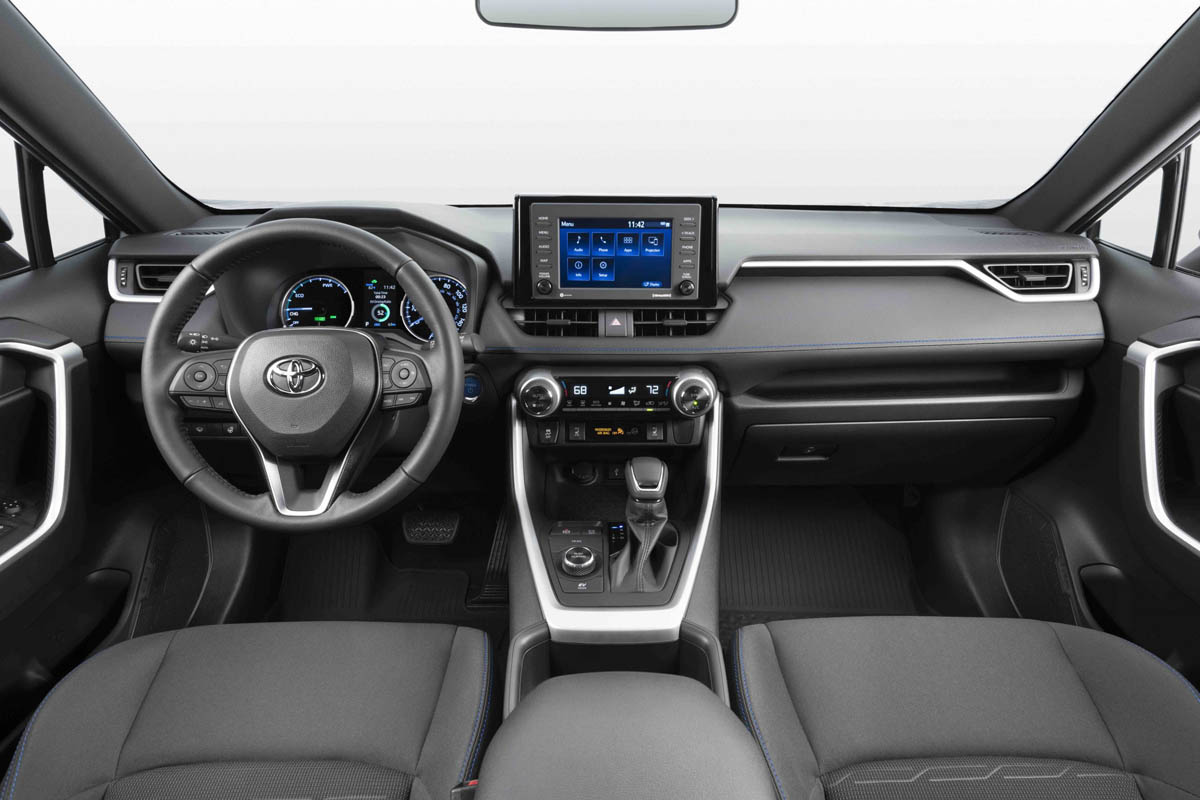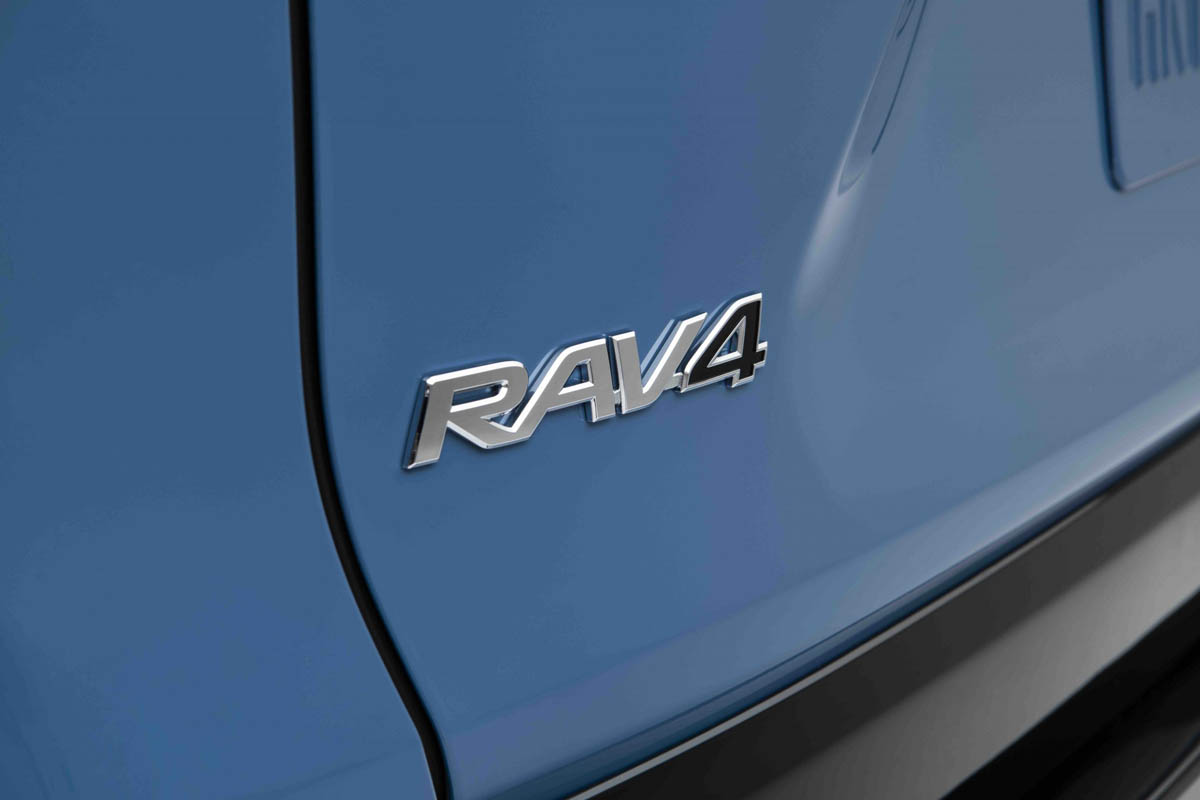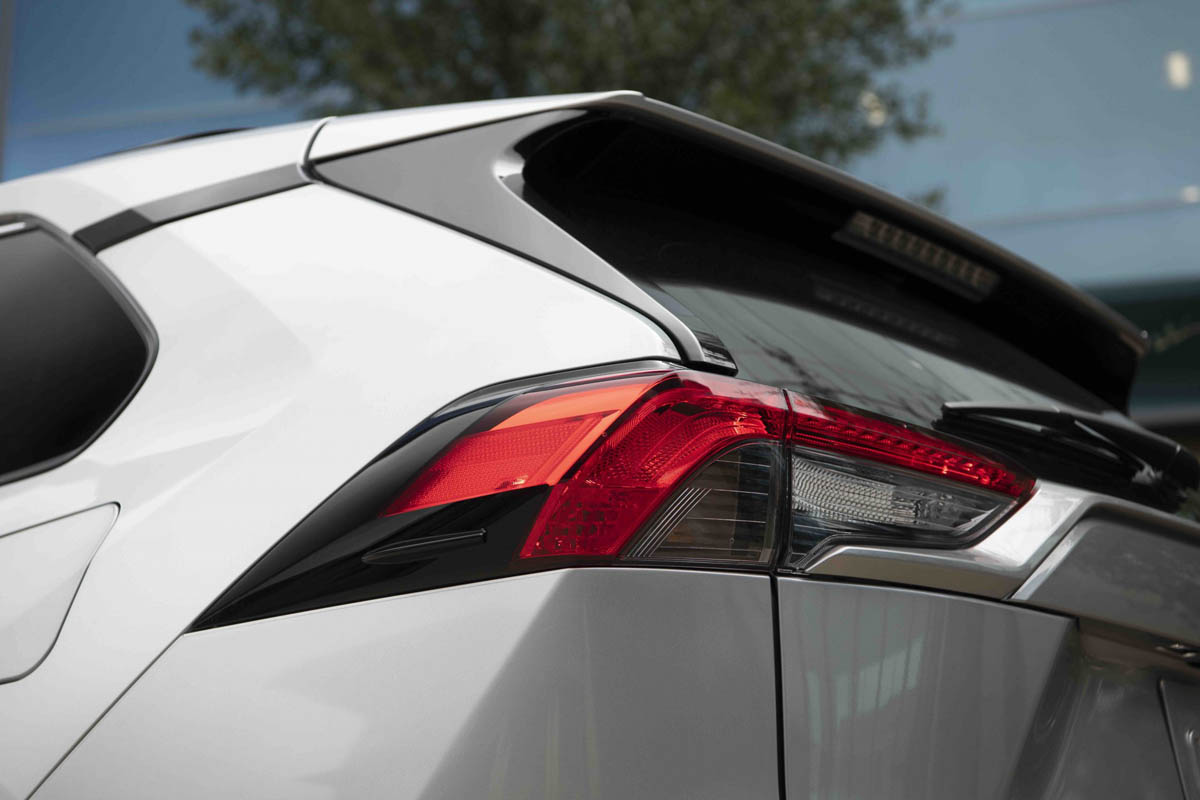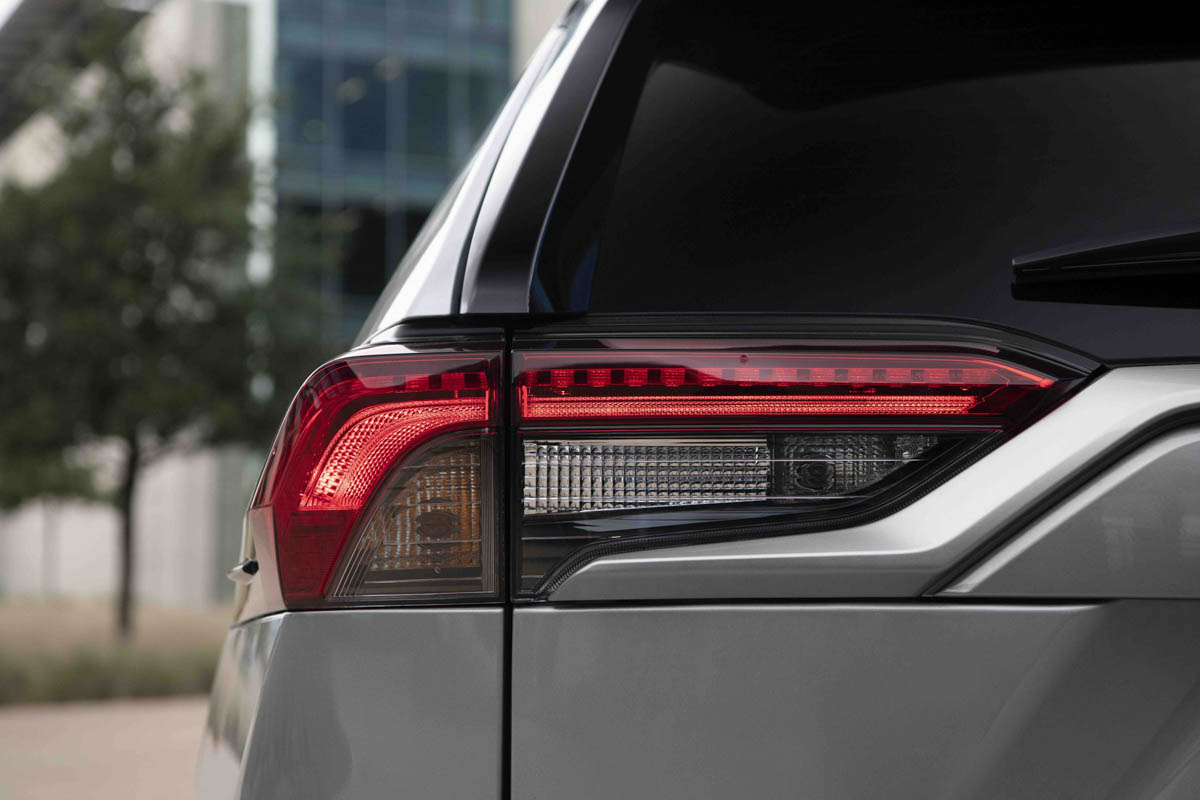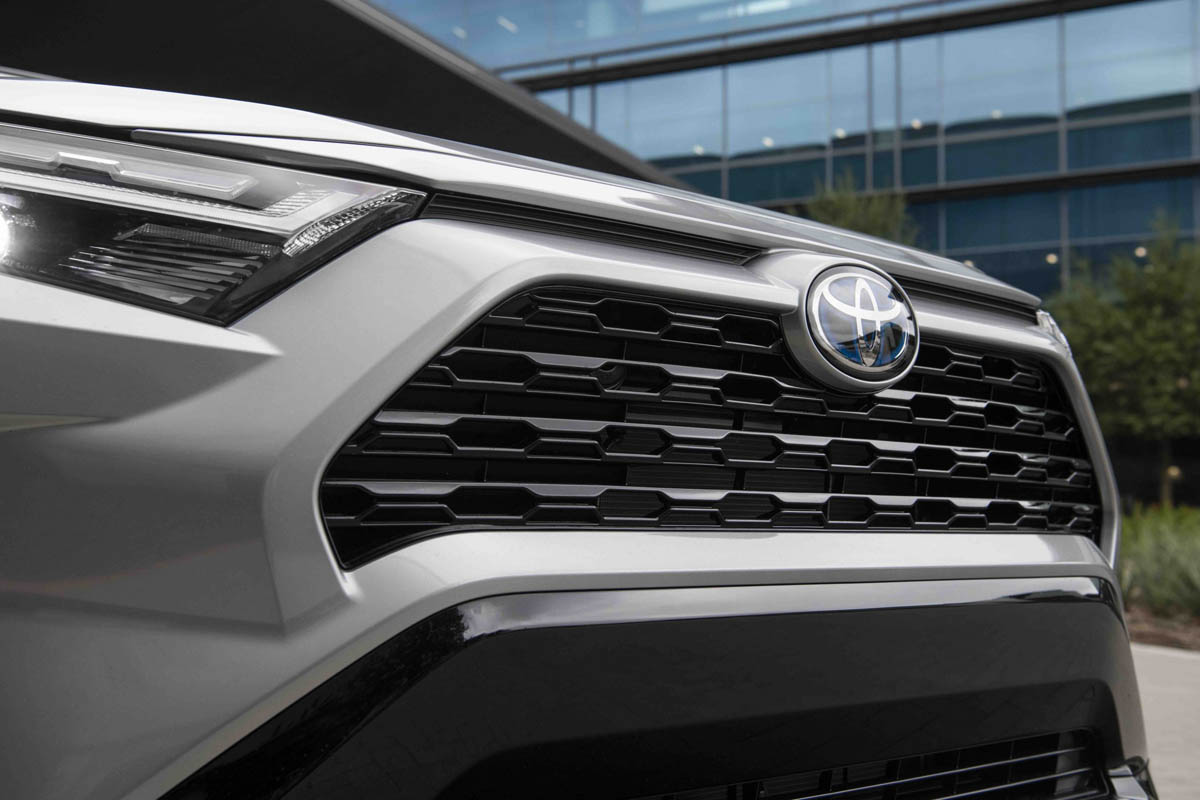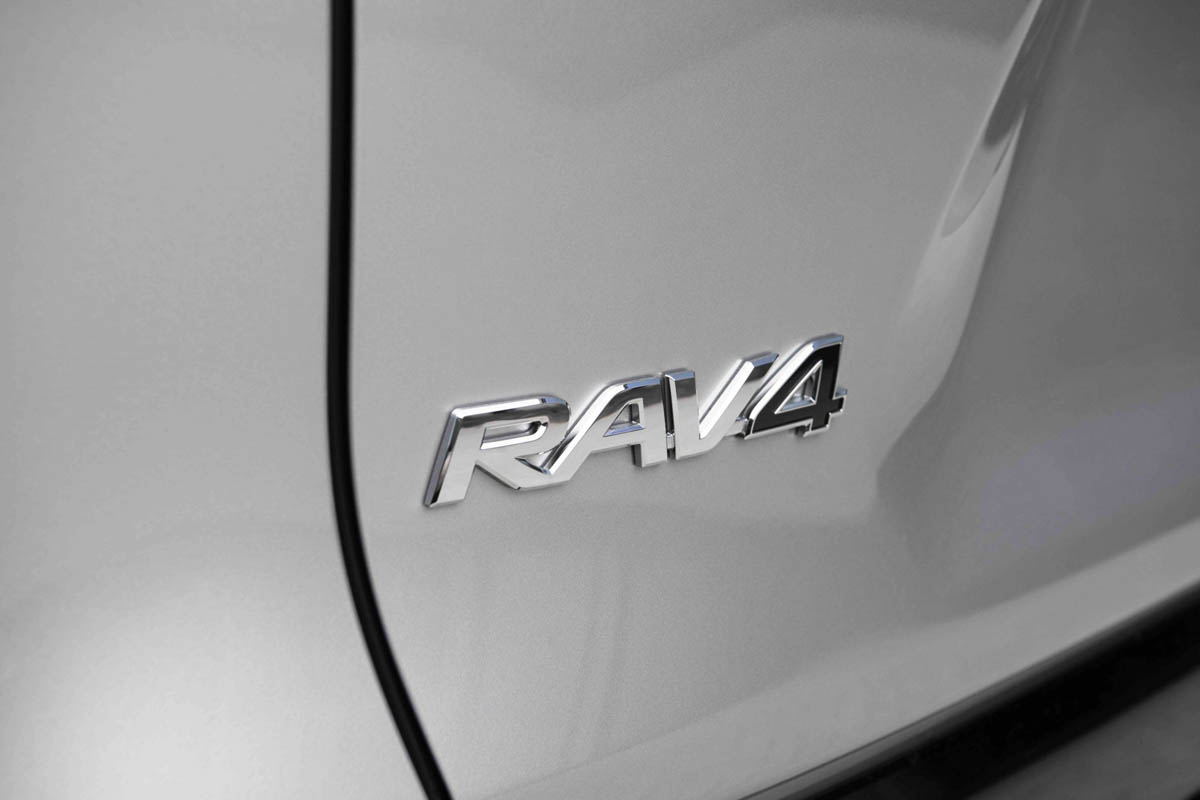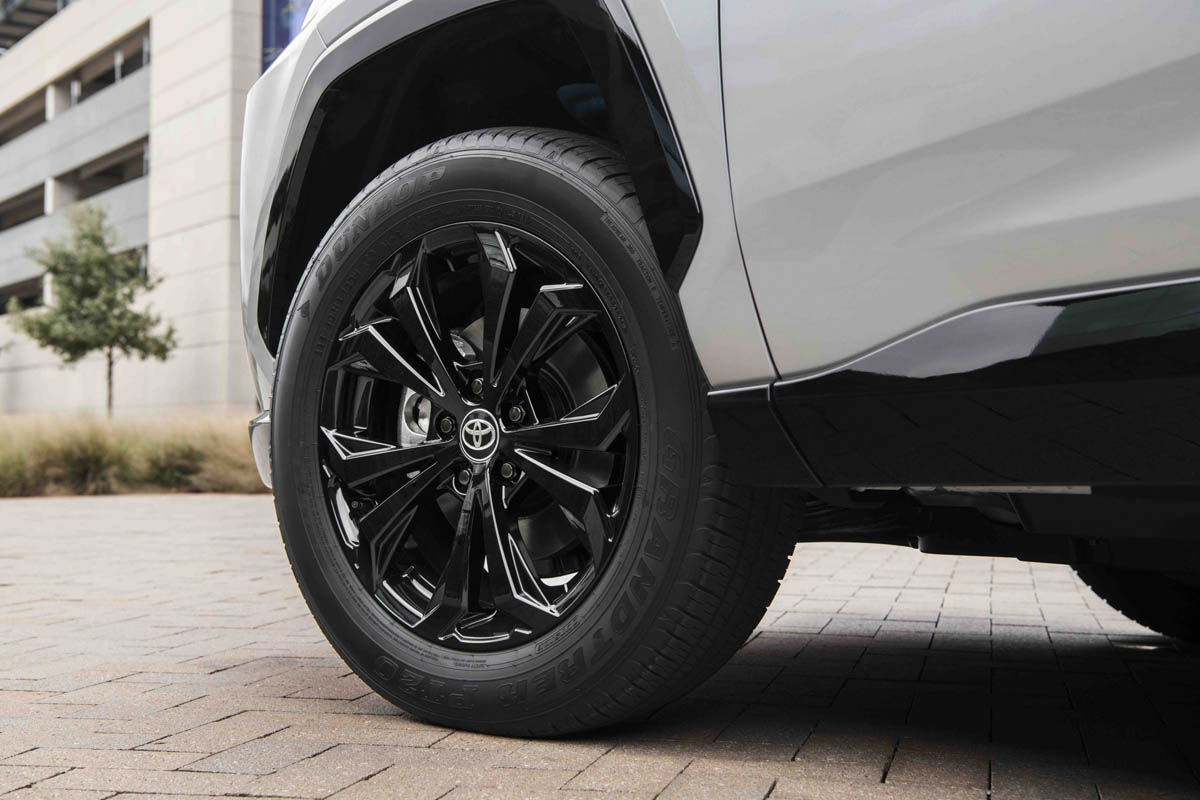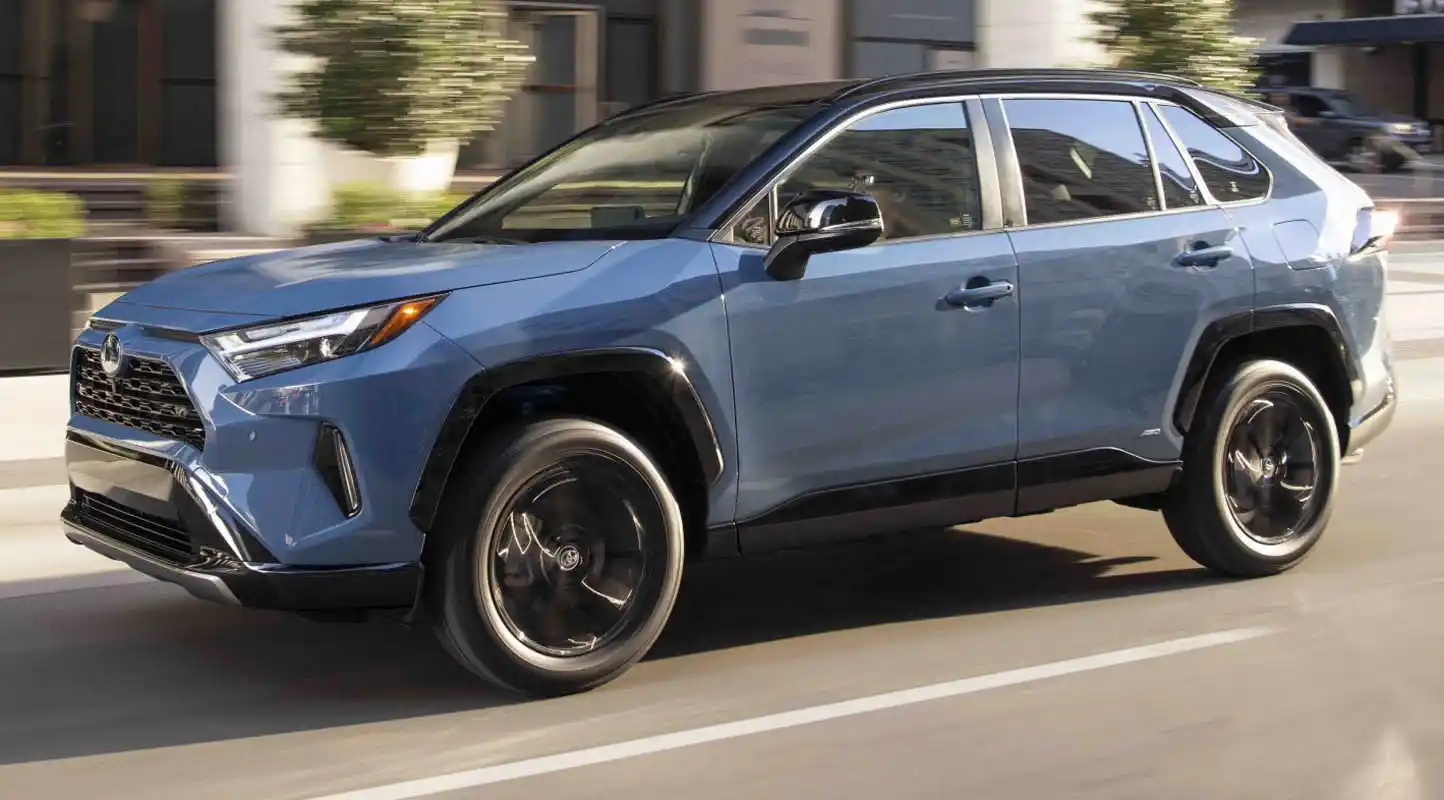
It’s been a quarter-century since Toyota introduced the groundbreaking model that went on to define a whole new type of passenger vehicle category. With ride, handling and comfort characteristics more akin to sedans than SUVs, the first RAV4 essentially created the template for what became the “crossover SUV” or just “crossover.” This unique vehicle left some mighty big footsteps to follow.
Following the RAV4’s arrival, the floodgates soon opened, with crossovers of all sizes and shapes eventually coming to dominate the SUV category and, ultimately, the U.S. automotive landscape. Now in its fifth generation, the Toyota RAV4 remains the leader in its size class, and it has also been America’s best-selling, non-pickup passenger vehicle for the past four years.
With each of its five model generations, the RAV4 offered increased room, comfort, versatility and performance while delivering higher fuel efficiency. The 2022 Toyota RAV4 offers a new SE Hybrid grade, as well as a multitude of exterior and interior upgrades across all grades.
How did it all start?
By the early 1990s, SUVs were significantly rising in popularity as more buyers selected them for such defining features as enhanced ride , ample cargo room and availability of four-wheel drive. The small SUVs in the market at the time that the original RAV4 debuted were built much like their larger cousins, using body-on-frame construction and solid-axle rear suspension. In a smaller SUV, this type of engineering generally yielded a bumpy, unrefined ride.
Meanwhile, in the Japanese market, Toyota had already found success with the RAV4 introduced in 1994, which had greatly exceeded sales projections. The first RAV4 established a new template for the burgeoning compact SUV segment: unitized body construction sharing some passenger-car components; four-wheel independent suspension; standard front-wheel drive with available full-time all-wheel drive; higher ride than typical passenger cars; and a design optimized for passenger room and cargo versatility.
It turns out, that was exactly what a growing slice of the SUV market was looking for, especially younger buyers with active lifestyles. The RAV4 name originally stood for “Recreational Activity Vehicle: 4-Wheel Drive,” though the model would always offer a choice between front-wheel drive or all-wheel drive.
The first RAV4 was available as five-door and three-door models, but the four-door version dominated sales in the U.S. and was the only body style to return with the second-generation RAV4 in 2000.
If one were to compare the current RAV4 with its ancestor, the two might seem worlds apart. The latest model is much larger than the original, yet still “right sized” for the class. It is much more powerful, yet also much more fuel efficient. The RAV4 offers greater comfort, along with amenities, safety technology, multimedia and connectivity features that simply did not exist 25 years ago.
Yet, both the first-generation RAV4 and the current model share Toyota’s renowned core traits and values of quality, reliability and durability.
The First RAV4, 1996-2000: Category Launcher
The RAV4 came to the U.S. in early 1996 in three-door and five-door models. This new-wave SUV adopted proven Toyota engineering with a 120-horsepower 2.0-liter four-cylinder engine. The optional all-wheel-drive system came from the Camry and Celica All-Trac models. (How times change: Today’s Camry adopted its optional AWD system from the RAV4.)
In the popular five-door form, the original RAV4 was 162 inches long on a 94.5-inch wheelbase, making it two feet shorter than the Camry sedan and a cinch to grab “compact only” parking spaces. With the popular optional four-speed automatic transmission and all-wheel drive, the 1996 RAV4 four-door delivered an EPA-estimated 21 mpg city / 26 mpg highway / 23 mpg combined (figures adjusted to the EPA’s current testing protocol).
Especially when equipped with its optional all-wheel drive system, the first RAV4 appealed to outdoors-oriented customers who found the vehicle’s enhanced traction and ground clearance more than capable for pursuing activities like hiking, mountain biking, skiing, snowboarding, kayaking and more. At the same time, the RAV4 won over a wide array of customers by serving as an ideal everyday vehicle, preserving the comfort and handling characteristics similar to compact sedans.
The 1996 RAV4 five-door started at around $17,000. Many buyers selected the optional automatic transmission, all-wheel drive and a comprehensive “L” upgrade package that included air conditioning, tilt steering wheel, 16-inch alloy wheels and other features.
Toyota would see RAV4 sales climb rapidly while also picking up accolades for this new type of vehicle, including being named “Automobile of the Year” for 1997 by Automobile magazine.
Second Generation, 2000-2005: More Style, More Power, More Room
The second-generation RAV4, available only as a five-door, brought the compact crossover SUV into the 21st century with arresting style in a slightly larger, more versatile package. The sophisticated, sharply creased shape emerged from Toyota’s Calty design works in California. The look was more upscale outside and in. The cabin delivered on that promise by adding a slew of new available upgrades, including a more comprehensive L Package, Leather Package and available six-disc CD changer.
Beneath the eye-catching sheet metal, the RAV4 grew slightly, with a 3-inch longer wheelbase benefitting interior room, especially the rear seat. Yet, at just 168 inches long, the second-generation RAV4 was still super-agile and as easy to drive as a compact sedan. There was big news under the hood, with the 2.0-liter engine gaining Toyota’s Variable Valve Timing with intelligence (VVT-i) and boosting output to 148 horsepower and 135 lb.-ft. of torque.
The interior gave off a sport coupe vibe, and later in the model run, a Sport Package added special wheels, gray-painted bumpers, fender flares, heated mirrors and sport fabric seats. Toyota significantly upgraded RAV4’s performance and safety for 2004 with a 2.4-liter engine making 161 horsepower and 165 lb.-ft. of torque. Critically, Vehicle Stability Control became standard for 2004, and an option package added front seat-mounted side airbags and side curtain airbags covering both seat rows.
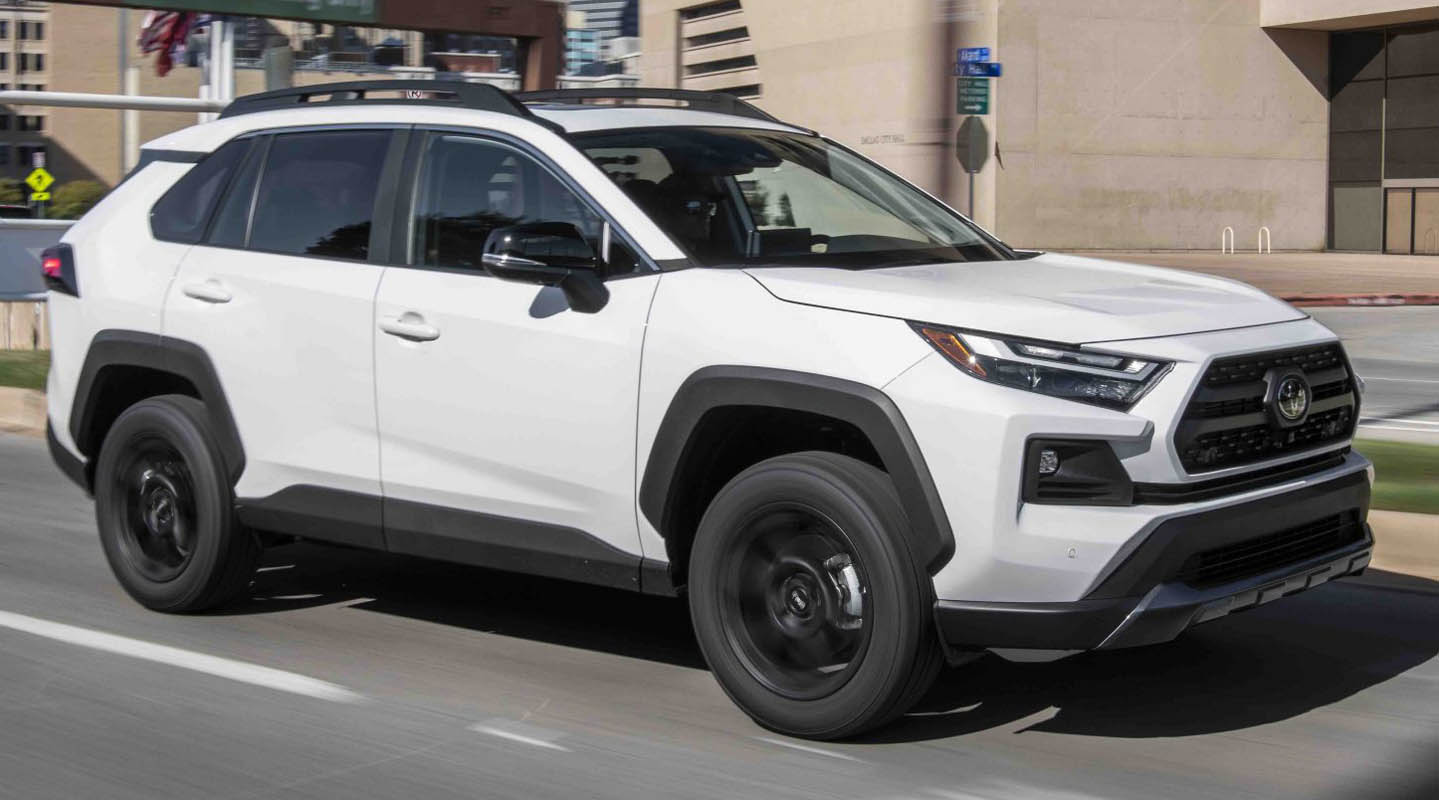
Third Generation, 2006-2012: Growth Spurt
The next RAV4 was yet another gamechanger. Toyota had already introduced the Highlander as a larger crossover, which presaged a larger third-generation RAV4 for 2006. Riding on an all-new platform that was significantly longer and wider, the 2006 RAV4 offered much more cabin room than before while maintaining a trim exterior size. The third-generation RAV4 introduced a contemporary, aerodynamically sleek and sporty design with sharp character lines.
The wheelbase grew by 10 inches to 105, and length was up nearly 14 inches to 181. This proved to be the new “right size” for a segment that was becoming better defined. The newly enlarged RAV4 offered optional third-row seating.
The RAV4 was now offered in three distinct grades: Base, Sport and Limited, each available in front-wheel drive or a new full-time electronically controlled all-wheel drive with a manual locking switch. The standard 2.4-liter four-cylinder engine with VVT-i delivered 166 horsepower.
The topper, though, was an available 268-horsepower 3.5-liter V6 engine. Four-cylinder models used a standard four-speed automatic transmission, while the V6 was teamed with a five-speed automatic and a 0-60 in 6.3 seconds.
The RAV4-specific platform featured redesigned suspension and a new electronic power steering system to deliver significantly improved ride and handling. The Sport grade featured standard 18-inch alloy wheels for enhanced agility, along with specific exterior and interior trim.
The Limited grade brought a touch of luxury with standard dual-zone air conditioning, power driver seat, a JBL® Premium Audio system with six-disc CD changer and available leather-trimmed seats. A 3.5mm auxiliary jack accommodated iPods and other music players, and a rear-seat DVD entertainment system became available.
Toyota’s Star Safety System included an enhanced version of Vehicle Stability Control (VSC), Traction Control, anti-lock brakes with Electronic Brake Force Distribution and Brake Assist. RAV4 also offered optional driver and front passenger seat-mounted side and front- and second-row roll-sensing side curtain airbags.
With cabin space now on par with mid-size SUVs, the enlarged RAV4 allowed Toyota to also introduce a larger, second-generation Highlander in 2007, further defining yet another growing segment.
Fourth Generation, 2013-2018: Segment Dominator
The fourth-generation RAV4 arrived for the 2013 model year and solidified Toyota’s segment leadership. The model’s boldest styling yet enveloped a new high-strength structure and debuted a new powertrain. With ample cargo room and the highest fuel efficiency rating of any RAV4 to that point were just the kind of bonuses that ensured RAV4’s continued dominance. The efficiency rating would go higher still with the first RAV4 Hybrid introduced for 2016.
The fourth-generation RAV4’s robust new 2.5-liter direct-injection four-cylinder engine delivered 176 horsepower and was coupled with a standard six-speed automatic transmission. This smooth, efficient powertrain earned RAV4 an EPA-estimated 26 combined MPG rating with front-wheel drive or an EPA-estimated 25 combined MPG with the sophisticated new All-Wheel Drive with Dynamic Torque Control.
The XLE and higher grades added more amenities, including dual-zone automatic climate control, power moonroof with sliding sunshade and heated outside mirrors with turn signal indicators. The RAV4 Limited featured standard SofTex-trimmed seats, including heated front seats.
All RAV4 models were now equipped with eight standard airbags: dual stage advanced driver and front passenger airbags, front seat-mounted side airbags, first and second row side curtain airbags, driver’s knee airbag and front passenger seat cushion airbag.
The RAV4’s advanced touch-screen multimedia systems covered the media gamut with AM/FM/CD, iPod® connectivity and control and USB 2.0 in the base LE Trim. Higher trims and options added more capability, including satellite radio, Premium Audio and navigation. All RAV4 models featured steering wheel controls for Bluetooth® hands-free phone and audio and the Multi-Information Display.
A significant upgrade for 2016 gave the RAV4 a quieter, more refined interior. The bigger story, though, was the first RAV4 Hybrid. Its innovative Electronic On-Demand All-Wheel-Drive System with intelligence (AWD-i) used an independent rear wheel motor to enhance traction when needed. The Hybrid not only had RAV4’s best fuel efficiency with an EPA-estimated 32 combined MPG rating, but also offered the quickest acceleration performance in the line.
Also for 2016, the Limited and new Platinum grades added Toyota Safety Sense P (TSS-P), which became standard on all grades for 2017. This invaluable active safety tech combined the Pre-Collision System with Pedestrian Detection Lane Departure Alert with Steering Assist, Automatic High Beams and Dynamic Radar Cruise Control. Higher model grades also had standard Blind Spot Monitor with Rear Cross Traffic Alert.
In its final year, the fourth-generation RAV4 gained a new Adventure model for some trail capability and sporty style, setting the stage for even more capable RAV4 variants to come.
Current Generation: Still the Leader of the Pack
The fifth-generation RAV4, introduced for 2019, offers the model’s widest selection ever, including first-ever RAV4 TRD Off-Road, the Hybrid offered in LE, XLE, XLE Premium, XSE and Limited model grades and the flagship RAV4 Prime PHEV with an EPA-estimated rating of 42 miles on all-electric battery power alone.
Engineered to tackle urban, suburban and outdoor adventures, the fifth-generation RAV4 is built on Toyota New Global Architecture (TNGA-K) platform. With a boldly chiseled design inspired by Toyota’s tough trucks, this latest RAV4 amplifies the desirable crossover traits that made the first RAV4 an instant success a quarter-century ago. Depending on model grade and options, the current RAV4 can be whatever the customer needs it to be, from the exceptionally well equipped LE model to a technology tour de force plug-in hybrid, with various levels of luxury and adventure in between.
Some high tech and premium features available for RAV4 include panoramic moonroof, digital rearview mirror, heated steering wheel, Qi-wireless phone charger, kick-type power liftgate, Bird’s Eye View Camera, Smart Key System on all doors, perforated heated and ventilated front seats, Adaptive Front Headlight System, Parking Assist with Automatic Braking and a head-up display.
In gas models, the 203-horsepower Dynamic Force 2.5-liter four-cylinder gas engine is paired with an 8-speed Direct-Shift automatic transmission. This combo has an impressive EPA-estimated 28 MPG city / 35 MPG highway / 30 combined MPG ratings in the front-wheel drive LE model, the best ever for a gas RAV4.
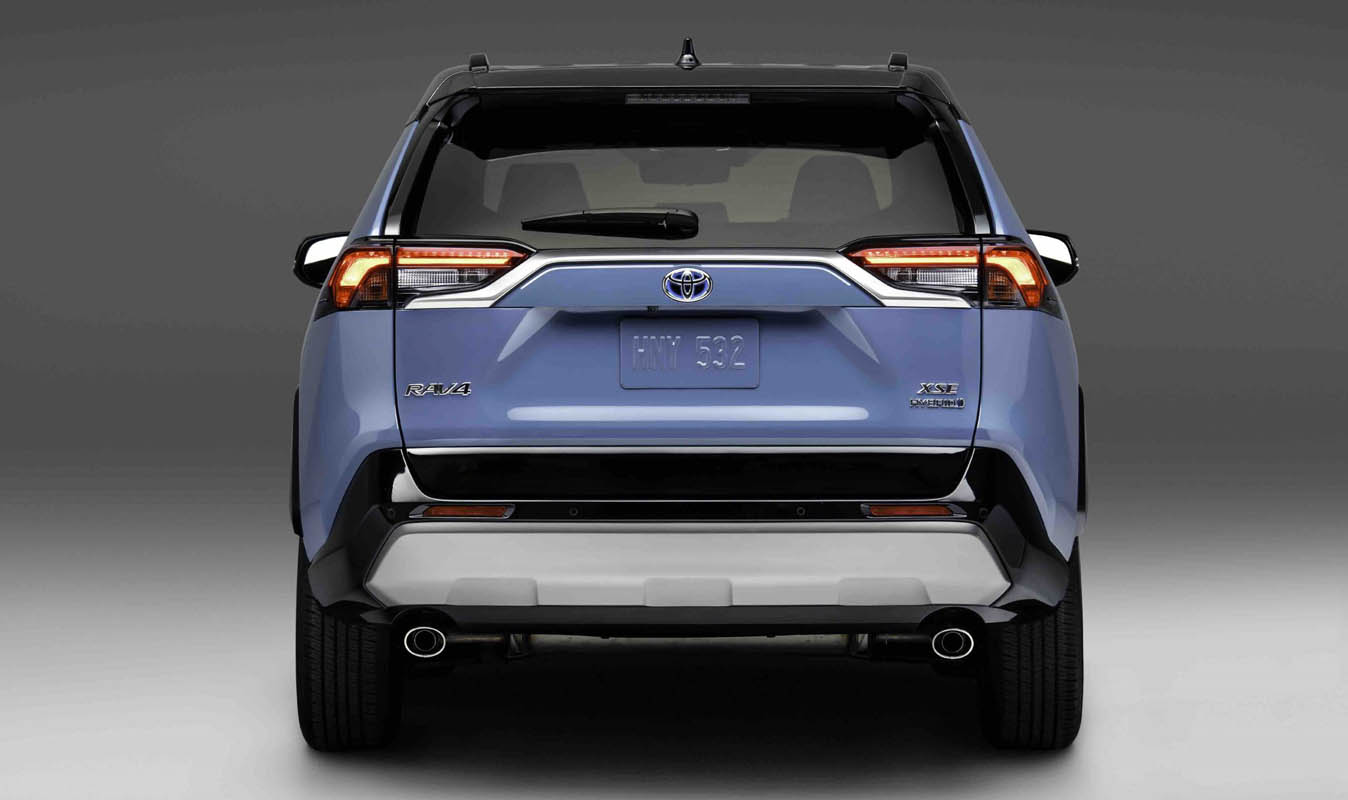
The RAV4 Hybrid models have 40 combined EPA-estimated rating, a nearly 30% improvement over the previous Hybrid. Likewise, the Hybrid’s e-AWD improves over the previous system, now with the independent rear motor operating proactively to enhance traction even before front wheel slippage is detected.
At the top of the model line, the RAV4 Prime PHEV (plug-in hybrid) is both the performance and efficiency leader. The RAV4 Prime has an all-electric range rating of 42 miles on battery alone on a single charge. Or, operating in hybrid mode, it can generate a combined 302 horsepower and do 0-60 mph in just 5.7 seconds, the second quickest Toyota in the lineup behind Supra. Available in the sporty SE and XSE grades, the RAV4 Prime has an EPA-estimated 94 MPGe rating. Standard Electronic On-Demand AWD delivers all-weather traction using an independent rear motor.
The RAV4 Adventure grade became more adventurous in the current series, offering 8.6-inch ground clearance. To go further off the beaten path, the TRD Off-Road adds special suspension and 18-inch matte-black TRD alloy wheels with all-terrain tires.
In the gas AWD-equipped models (except Limited grade), All-Wheel Drive with Dynamic Torque Control and Rear Driveline Disconnect can automatically and transparently disengage and re-engage AWD as needed, optimizing fuel efficiency. The EPA-estimated fuel economy rating for the LE AWD nearly matches the FWD version. Standard for RAV4 Adventure and TRD Off-Road models and optional for the Limited, Dynamic Torque Vectoring All-Wheel Drive with Rear Driveline Disconnect can direct torque to individual rear wheels.
Toyota Safety Sense (TSS 2.0), standard on all current RAV4 models, includes Pre-Collision System with Pedestrian Detection, Full-Speed Range Dynamic Radar Cruise Control, Lane Departure Alert with Steering Assist, Automatic High Beam, Lane Tracing Assist and Road Sign Assist. Blind Spot Monitor with Rear Cross Traffic Alert and Rear Cross Traffic Braking system are standard on the higher grades. Front and Rear Parking Assist with Automatic Braking is an additional safety option.
In every RAV4, Toyota Multimedia includes SiriusXM® Platinum Plan and Wi-Fi Connect trial and hands-free access to Apple CarPlay®, Android Auto™ and Amazon Alexa compatibility. Integrated Dynamic Navigation and JBL® Premium Audio are available. In gas and Hybrid RAV4s, a 7-inch and 9-inch touchscreen is available, depending on model grade; the RAV4 Prime XSE features a 9-inch screen.
A pioneer and leader in crossover SUVs from the start, Toyota currently offers the sporty, compact C-HR, all-new Corolla Cross, Venza, RAV4 and Highlander in this expansive space. Whatever comes next in crossovers, and however it is powered, expect Toyota to continue leading the way.
What’s New for 2022
Keeping in line with Toyota’s focus to find ways to continuously improve and upgrade the RAV4, the same will ring true for the 2022 model year.
For 2022, the RAV4 is getting some enticing updates, including a new SE Hybrid grade as well as some exterior and interior updates across all grades.
Designed for customers looking for sporty performance and sporty style but at a lower price compared to the XSE, the new SE Hybrid grade for RAV4 includes mono-tone paint, fabric trimmed seats and a 7-inch touchscreen with six speakers. And the SE Hybrid grade’s available options are exceptional, as well as smartly packaged. The weather package is a commuter’s dream, offering a heated leather steering wheel, heated front seats and rain-sensing windshield wipers with a de-icer function. The convenience package includes a moonroof, adjustable power liftgate and not to mention, Audio Plus that upgrades to a 9-inch touchscreen.
RAV4 gets some enticing exterior and interior features across all grades when it goes on sale next month. The RAV4 XSE gets a bold new color in Calvary Blue with a black roof. In fact, Calvary Blue will also make its way on the new SE Hybrid grade, as well as the existing TRD Off-Road.
There are quite a few updates to the wheels as well. LE Hybrid, XLE and XLE Hybrid get a new color for their wheels, as does the Adventure grade. While the XLE Premium Hybrid and Limited Hybrid get a new design, as does the XSE Hybrid.
XLE grades and above get updated headlamps – both for style and for capability improvement. New LED foglamps are being introduced for XLE Premium, Limited, Adventure and TRD Off Road. And the XSE Hybrid gets the super sleek vertical lights that debuted on the XSE Prime in 2021.
Interior updates are also found across multiple grades:
- Locking glove box and LED interior lamps added to all grades.
- XLE and above get illuminated interior switches.
- Limited grade gets an 8-way power passenger seat.
More details on the 2022 RAV4, including pricing, will be released in mid-December
